
Child Login
- Kindergarten
- Number charts
- Skip Counting
- Place Value
- Number Lines
- Subtraction
- Multiplication
- Word Problems
- Comparing Numbers
- Ordering Numbers
- Odd and Even
- Prime and Composite
- Roman Numerals
- Ordinal Numbers
- In and Out Boxes
- Number System Conversions
- More Number Sense Worksheets
- Size Comparison
- Measuring Length
- Metric Unit Conversion
- Customary Unit Conversion
- Temperature
- More Measurement Worksheets
- Writing Checks
- Profit and Loss
- Simple Interest
- Compound Interest
- Tally Marks
- Mean, Median, Mode, Range
- Mean Absolute Deviation
- Stem-and-leaf Plot
- Box-and-whisker Plot
- Permutation and Combination
- Probability
- Venn Diagram
- More Statistics Worksheets
- Shapes - 2D
- Shapes - 3D
- Lines, Rays and Line Segments
- Points, Lines and Planes
- Transformation
- Quadrilateral
- Ordered Pairs
- Midpoint Formula
- Distance Formula
- Parallel, Perpendicular and Intersecting Lines
- Scale Factor
- Surface Area
- Pythagorean Theorem
- More Geometry Worksheets
- Converting between Fractions and Decimals
- Significant Figures
- Convert between Fractions, Decimals, and Percents
- Proportions
- Direct and Inverse Variation
- Order of Operations
- Squaring Numbers
- Square Roots
- Scientific Notations
- Speed, Distance, and Time
- Absolute Value
- More Pre-Algebra Worksheets
- Translating Algebraic Phrases
- Evaluating Algebraic Expressions
- Simplifying Algebraic Expressions
- Algebraic Identities
- Quadratic Equations
- Systems of Equations
- Polynomials
- Inequalities
- Sequence and Series
- Complex Numbers
- More Algebra Worksheets
- Trigonometry
- Math Workbooks
- English Language Arts
- Summer Review Packets
- Social Studies
- Holidays and Events
- Worksheets >
- Pre-Algebra >
- Fractions >
- Multiplication >

Fraction Multiplication Word Problems Worksheets
Our printable worksheets on multiplying fractions word problems task grade 4 through grade 7 students with reading and solving realistic scenarios by performing fraction multiplication. The problems feature both common and uncommon denominators, so the budding problem-solving stars must follow the correct procedure to obtain the products. Equipped with answer keys, these pdf resources are available in customary and metric units. Try some multiplying fractions word problems worksheets for free!
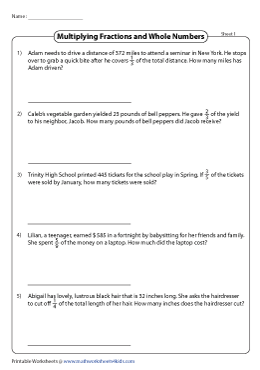
Multiplying Fractions by Whole Numbers Word Problems
Impel the eager beavers in 4th grade and 5th grade to multiply fractions by whole numbers through word problems. Kids are required to multiply proper fractions and improper fractions by whole numbers correctly.
- Download the set
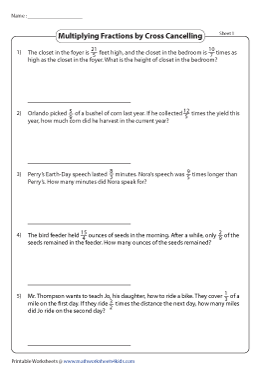
Multiplying Fractions by Cross-Cancelling Word Problems
Say a whole-hearted yes to our no-prep printable worksheets on fraction multiplication that have you fully covered! Interpret the word problems and multiply fractions with a special emphasis on cross cancelling.
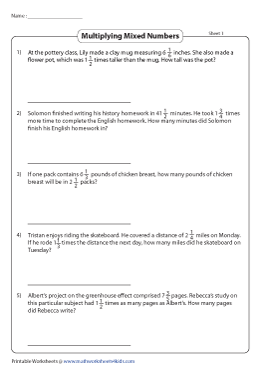
Multiplying Mixed Numbers Word Problems
Multiplying mixed numbers may initially feel incomprehensible, but practice makes the pain melt away. Let grade 6 and grade 7 kids convert the mixed numbers into fractions and work out the products.
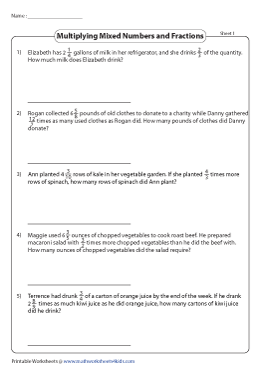
Multiplying Mixed Numbers and Fractions Word Problems
Let not the challenges of obtaining solutions for problems befall you! Our pdf worksheets on multiplying fractions word problems, equipped with answer key for a quick self-validation, help ease into the process.
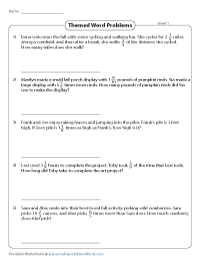
Themed Fraction Multiplication Word Problems
Revive 5th grade, 6th grade, and 7th grade students' problem-solving fortunes with our themed word problems, featuring a good mix of like fractions, unlike fractions, whole numbers, and mixed numbers!
Related Worksheets
» Multiplying Fractions on a Number Line
» Multiplying Fractions by Whole Numbers
» Multiplying Fractions with Cross Cancelling
» Multiplying Mixed Numbers
» Fraction Word Problems
Become a Member
Membership Information
Privacy Policy
What's New?
Printing Help
Testimonial
Copyright © 2024 - Math Worksheets 4 Kids
This is a members-only feature!


Trending Post : Teaching Fractions with Food
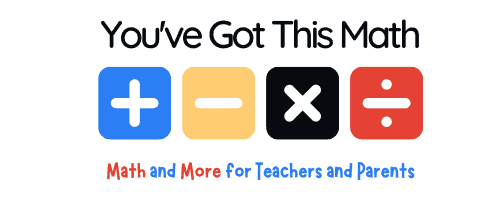
Multiplying Fractions Word Problems | 10 Real Life Examples | PDF
Table of Contents
Multiplying Fractions Word Problems
I guess maybe some students get it from their parents. After all, I know that I have been known to grumble about things I learned in school, but never used in real life. I’m sure when it comes to word problems for multiplying fractions, that phrase may have passed your lips too.
But, we do multiply fractions in real life and the real world sometimes. For example, recipes! Recipes and adjusting, maybe cutting a recipe in half or doubling it, those are real world examples of multiplying fractions.

Most schools begin introducing fractions around 3rd grade, with multiplying fractions word problems beginning in 6th grade.
Here are 10 multiplying fractions word problems to work on multiplying fractions using real-life examples.
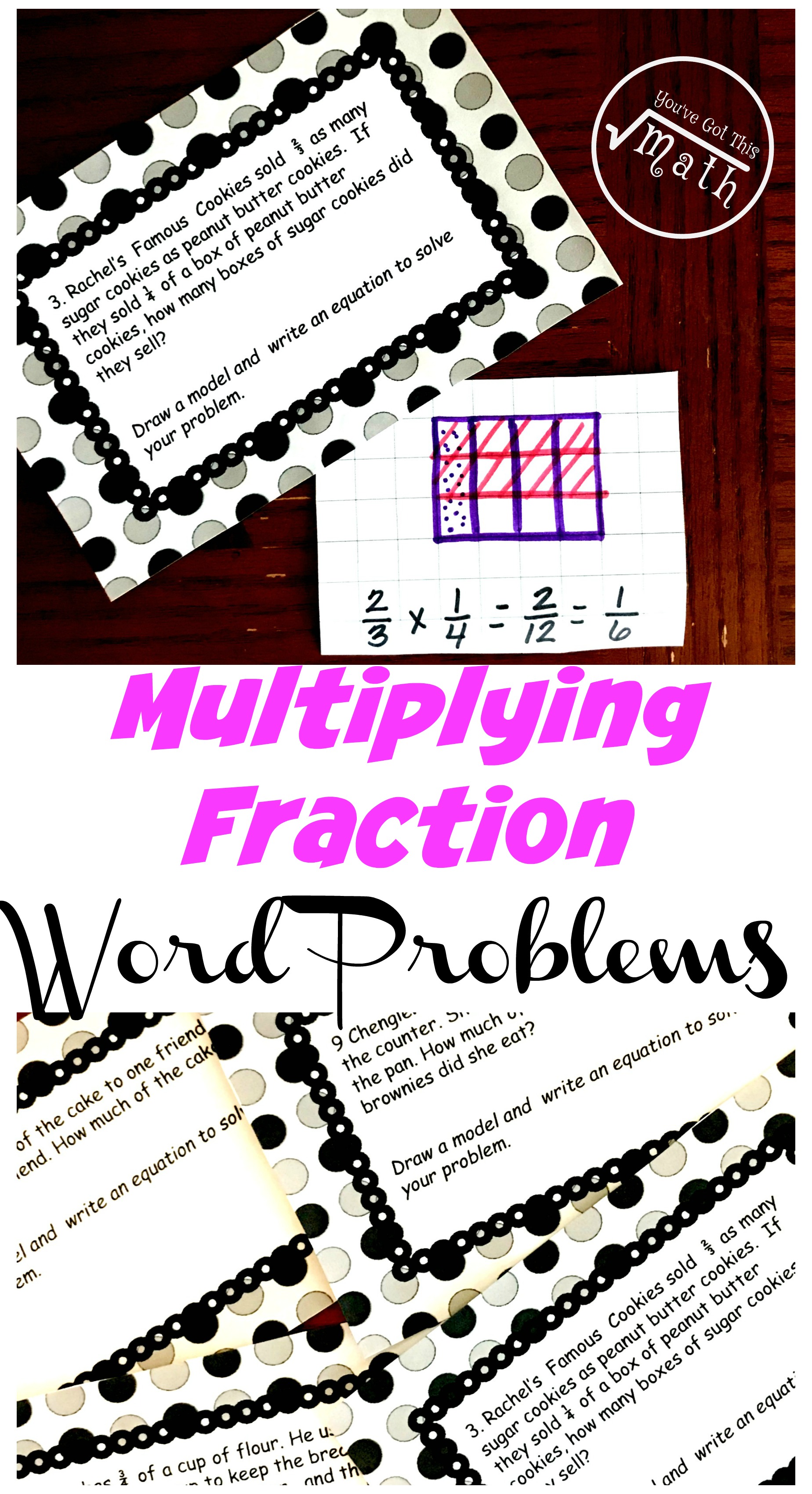
Have you ever heard, “I will never use this”?
It is important for children to see how math is used in everyday life. And word problems are one way to do this.
Multiplying Fractions
Multiplying Fractions seems like a foreign concept to many students, but it is a concept we use.
Have you ever wanted to only make 1/2 of a recipe? If so, you have probably multiplying fractions…..especially if the recipe called for 3/4 a cup of flour.
So today, we are going to finish up our multiplying fraction unit with some word problems. I am doing the activity in the post as well as some of the fraction games and activities below.
Grab my other free multiplying fractions by fractions activities.
- How to Multiply Fractions by Fractions – Step by Step Instructions with Free Printable
- Here is a Multiplying Fractions BINGO Game That’s Perfect for Extra Practice
- 3 Cut and Paste Worksheets For Multiplying Fractions Practice
- Free Printable Fraction Game For Multiplying Fractions
- Many More on my TeachersPayTeachers page for Multiplying Fractions
Preparing the Fractions Real World Problems
These task cards are easy to prepare.
- Print off on copy paper.
- Have children cut them out and glue them in their math journal.
- Finally, provide them pencils, glue, and colored pencils. and you are ready to go.
Multiplying Fractions Word Problems Example
Rachel’s Famous Cookies sold 2/3 as many sugar cookies as peanut butter cookies. If they sold 1/4 of a box of peanut butter cookies, how many boxes of sugar cookies did they sell?
The first step is to look at we know. We know that they sold 1/4 a box of peanut butter cookies. But they only sold 2/3 of the 1/4 when it came to the sugar cookies.
So if we want to start with a diagram, we can begin by drawing a box of cookies and coloring in 1/4.
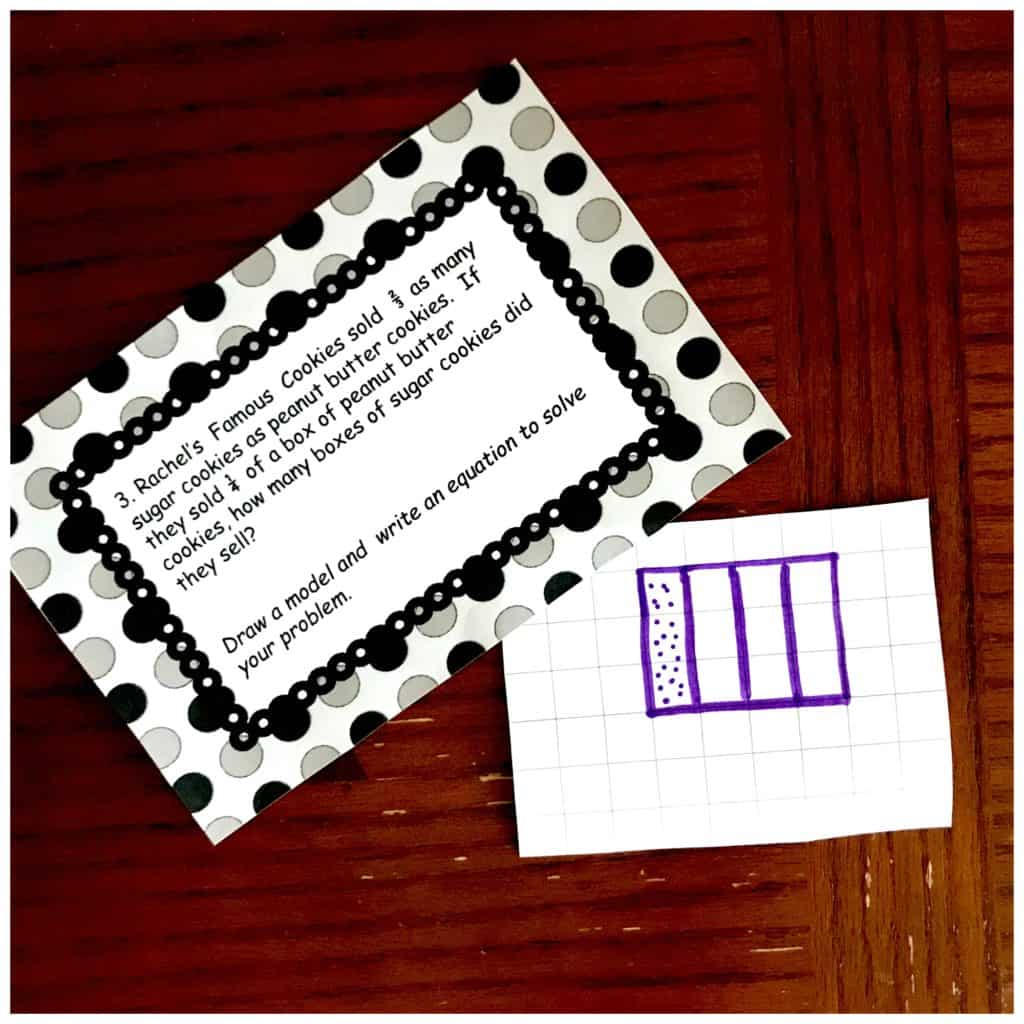
Many students require a multisensory approach to learning. It’s not just enough to talk about something and hear it. They have to see it. This activity works as a visual graphic organizer of sorts, so that the student can visualize what is going on.
Next, we can color in 2/3.
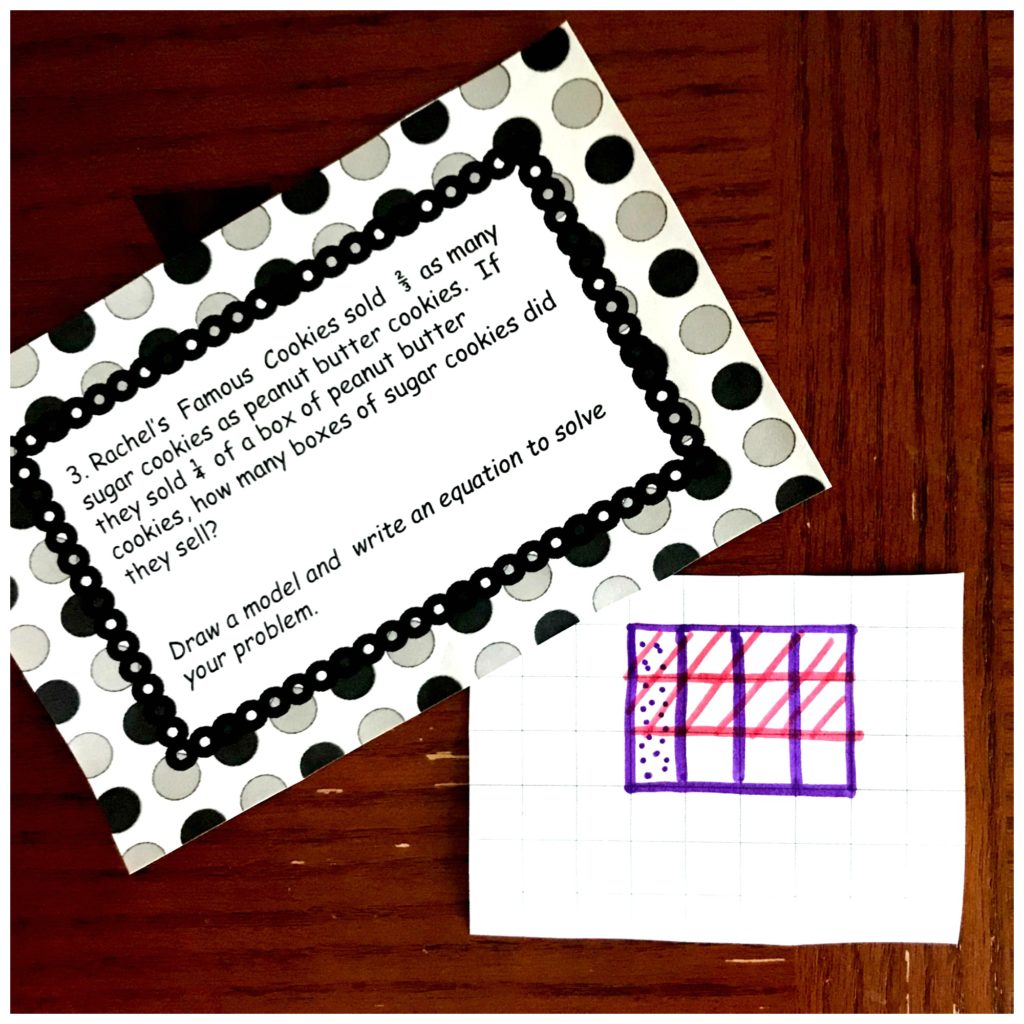
Finally, we look and see what part overlaps, and this is the answer! Two out of the 12 squares overlap, so our answer is 2/12 or 1/6 when the fraction is simplified . But using the squares on the paper and coloring with overlap, we have completed our first multiplying fractions word problem.
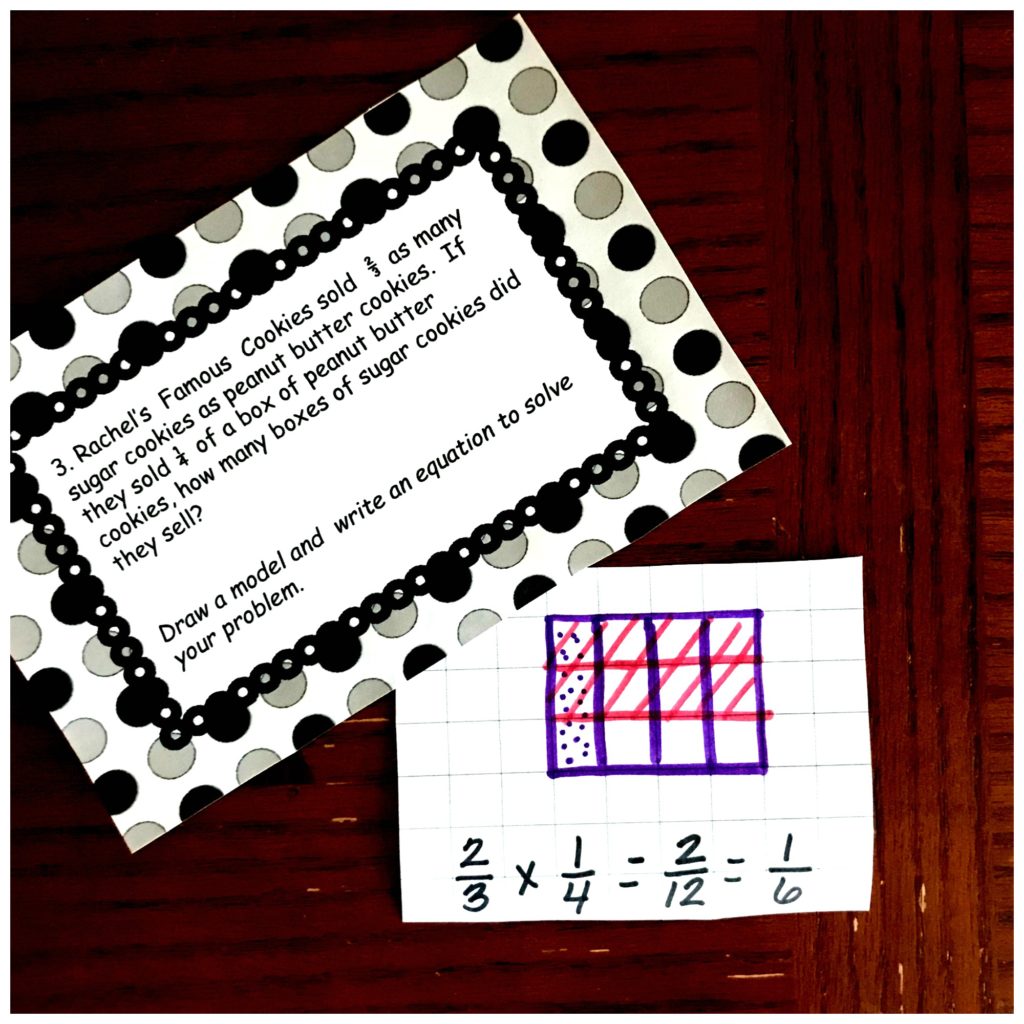
Using Fractions in Real Life
I’m a firm believer that children should not be given multiplying fractions word problems that require the same operation each time.
That is not real life, and that does teach them to learn what needs to be done to solve the problem. We need to give them the confidence that they can apply this knowledge to different situations and word problems.
That’s why I am including more than that in the multiplying fractions word problems worksheets.
So even though this printable is for practicing multiplying fractions with word problems there are a few word problems where multiplication is not used. Here is one example.
Luciana gave 1/4 of the cake to one friend, and 1/3 another friend. How much of the cake is left if she started with a whole cake?
This word problem has the children subtracting to figure out the answer.
- We know that Luciana started with a whole cake, which equals one. So we want to begin by drawing a square.
- The next thing we have to figure out is how many parts we need to divide it up into. Since we now we will be subtracting 1/4 and 1/3 we will need to get the Least Common Multiple. The multiples of three and four are…..
4: 4, 8, 12
3: 3, 6, 9, 12
As you can see 12 is the least common multiple. So our square needs to have 12 equal parts.
3. Next, we will need to find equivalent fractions for both of our fractions.
1/4 x 3/3 = 3/12 and 1/3 x 4/4 = 4/12.
4. Now all that is left is to subtract 3 part and then 4 parts.
5. Finally, we can see that there 5/12 of the cake left.
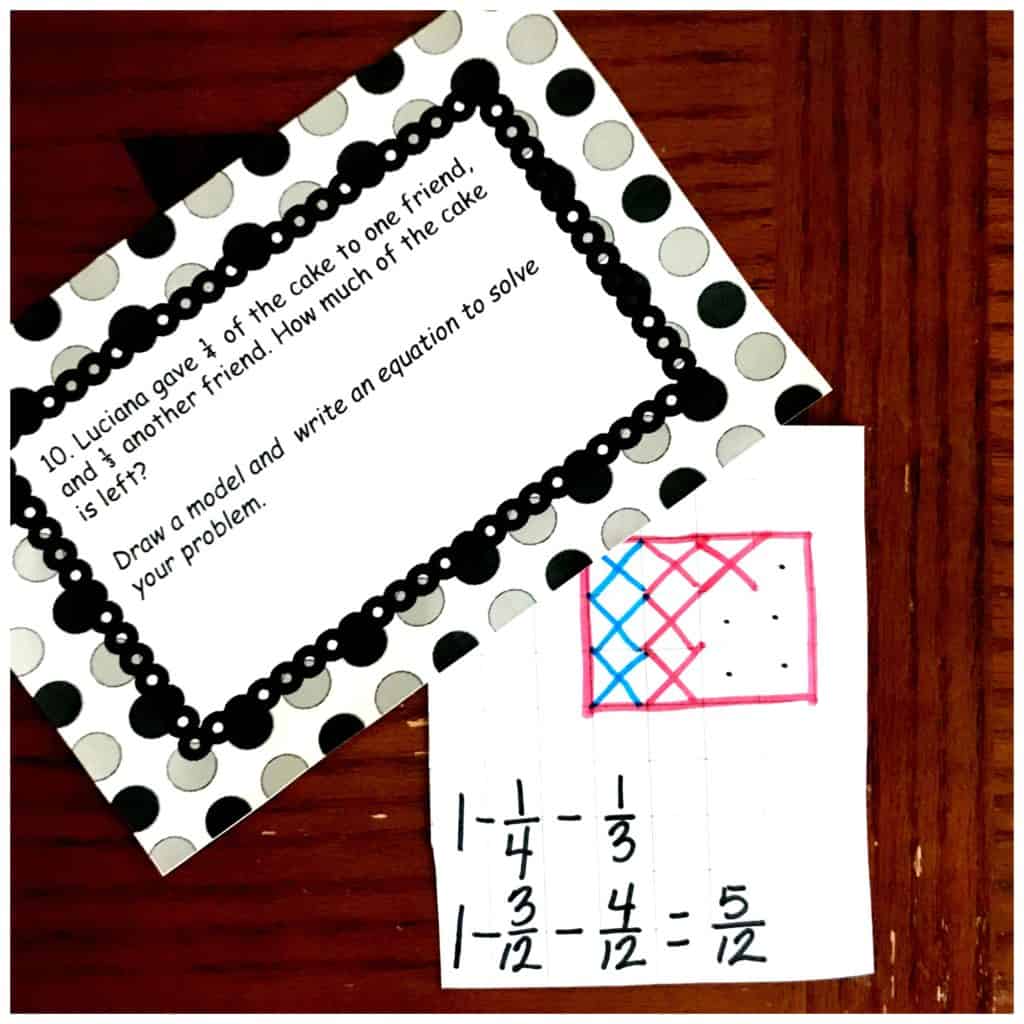
Word Problems are an important part of math instruction, and how we do math in everyday life. Enjoy working through these real life problems with your children.
The printable that accompanies this activity is below. Here you go, your free multiplying fractions word problems PDF. This free printable includes multiplying fractions word problems with answers.
You’ve Got This!
Get more fractions activities by ordering a workbook (but hey, nothing beats a free printable!)
| # | Preview | Product | Price | |
|---|---|---|---|---|
| 1 | $11.97 | |||
| 2 | $5.35 | |||
| 3 | $13.99 | |||
| 4 | $9.99 |
Similar Posts
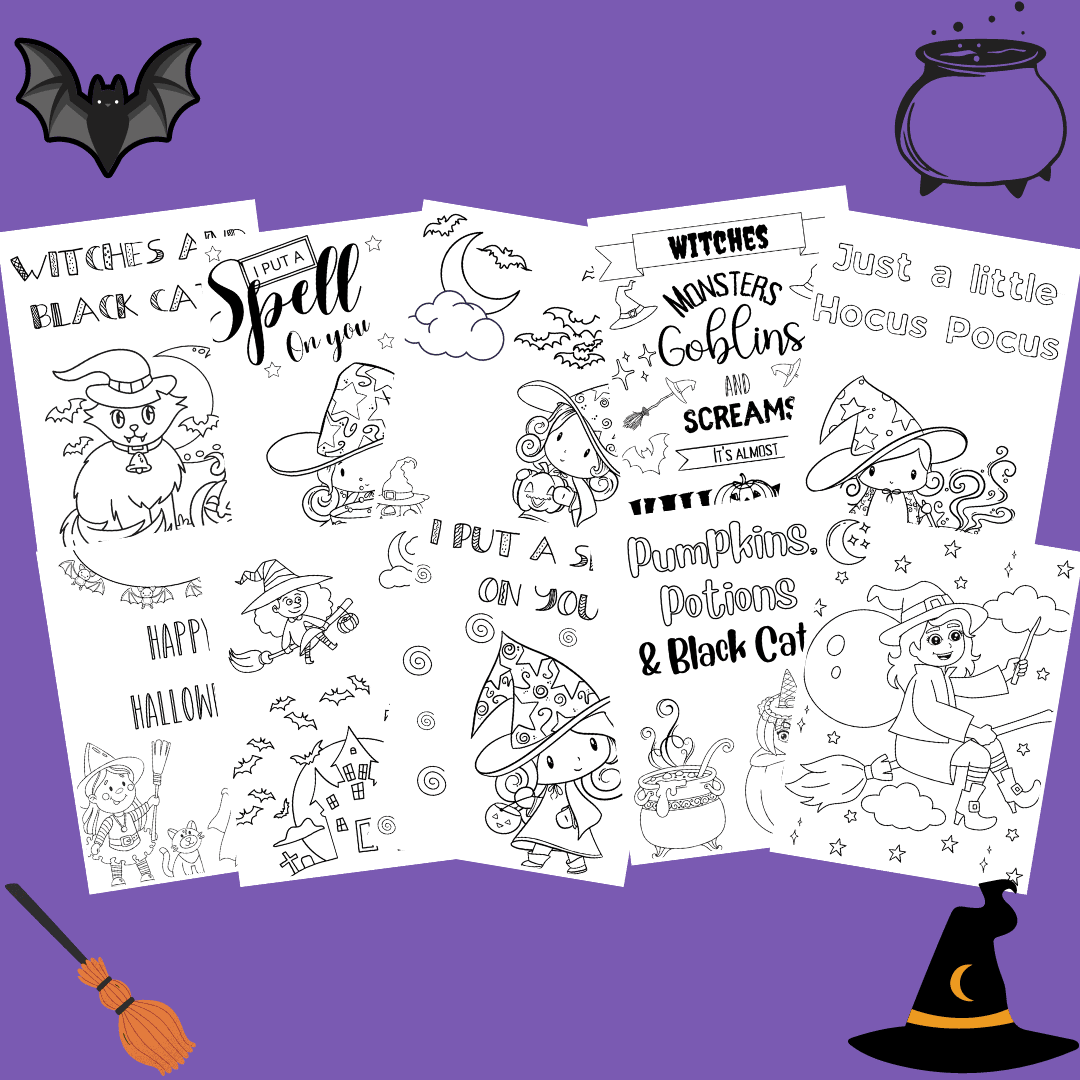
10 Free Witch 🧹 and Witch Hat Coloring Pages 🧹 PDF Printable
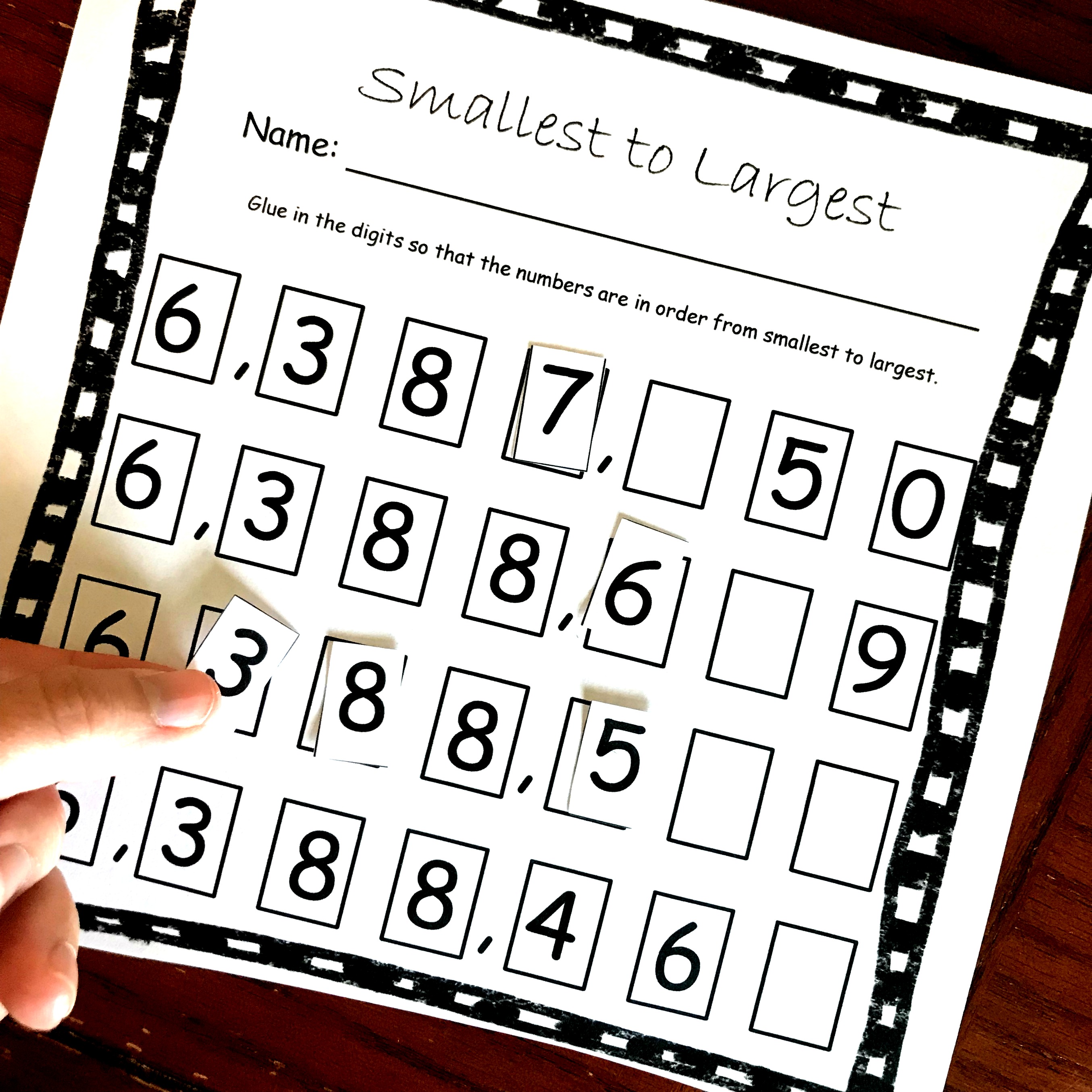
FREE Ordering Large Numbers Cut and Paste Activity
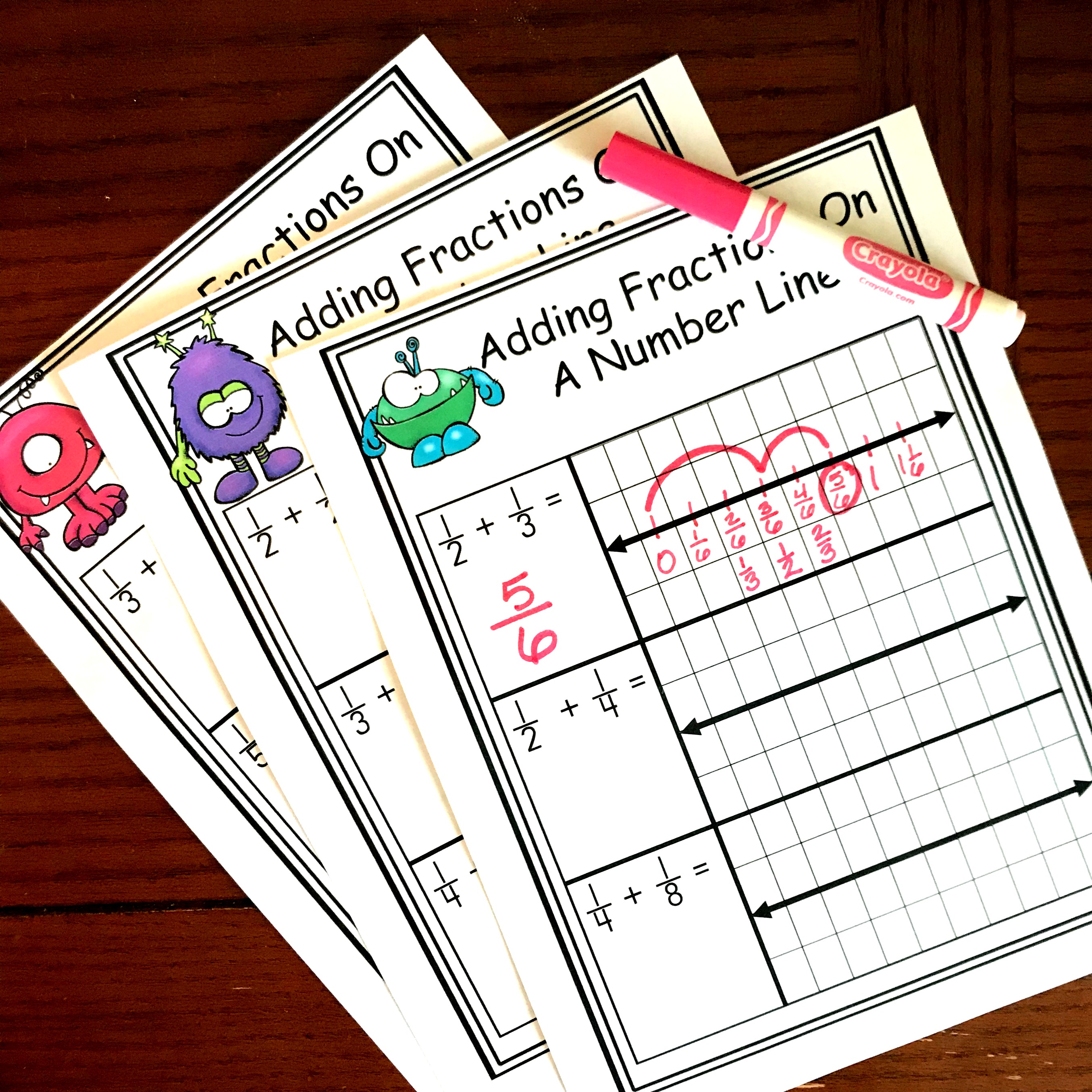
FREE Worksheets for Adding Fractions With Unlike Denominators on a Number Line
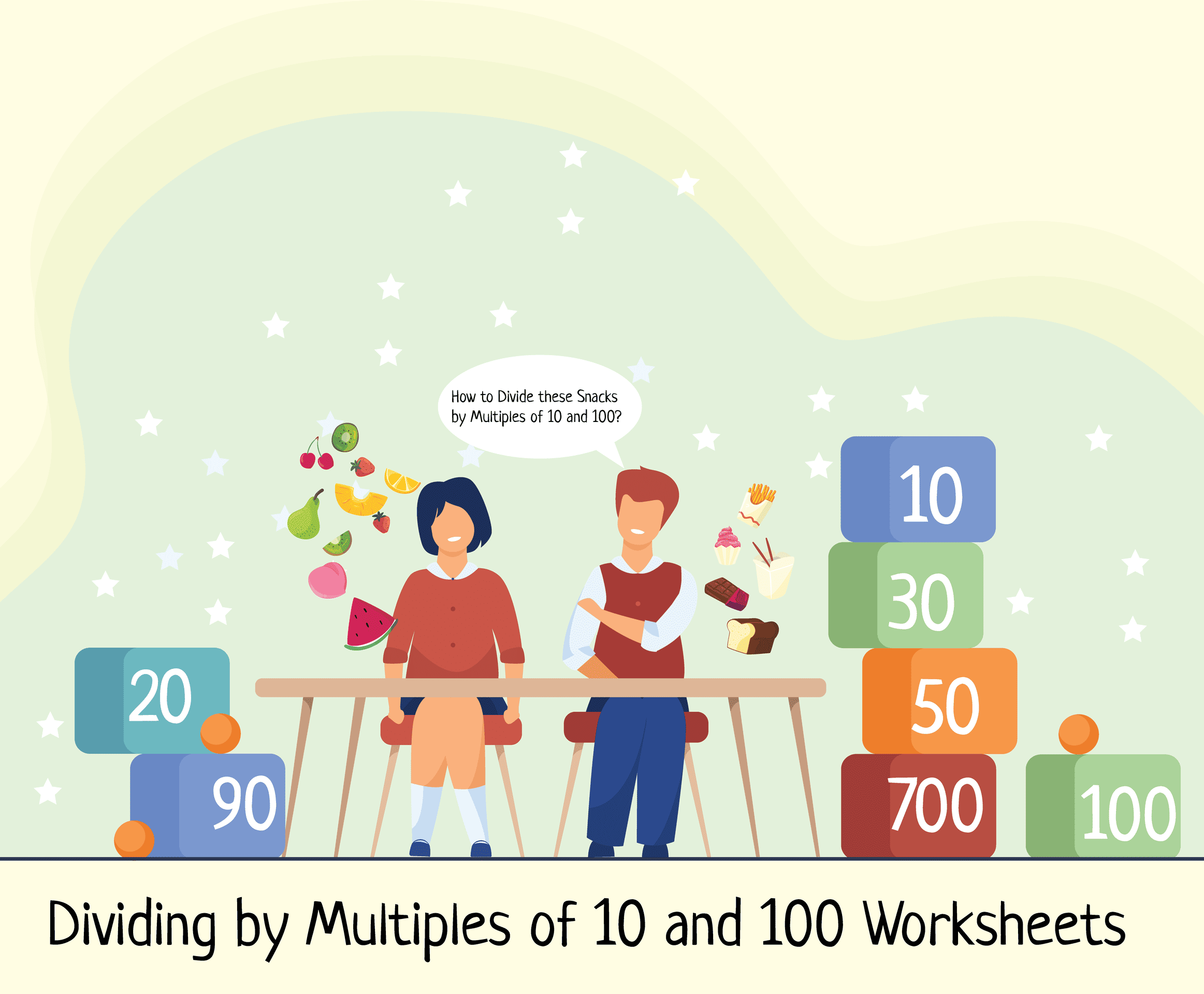
7 Free Dividing by Multiples of 10 and 100 Worksheets
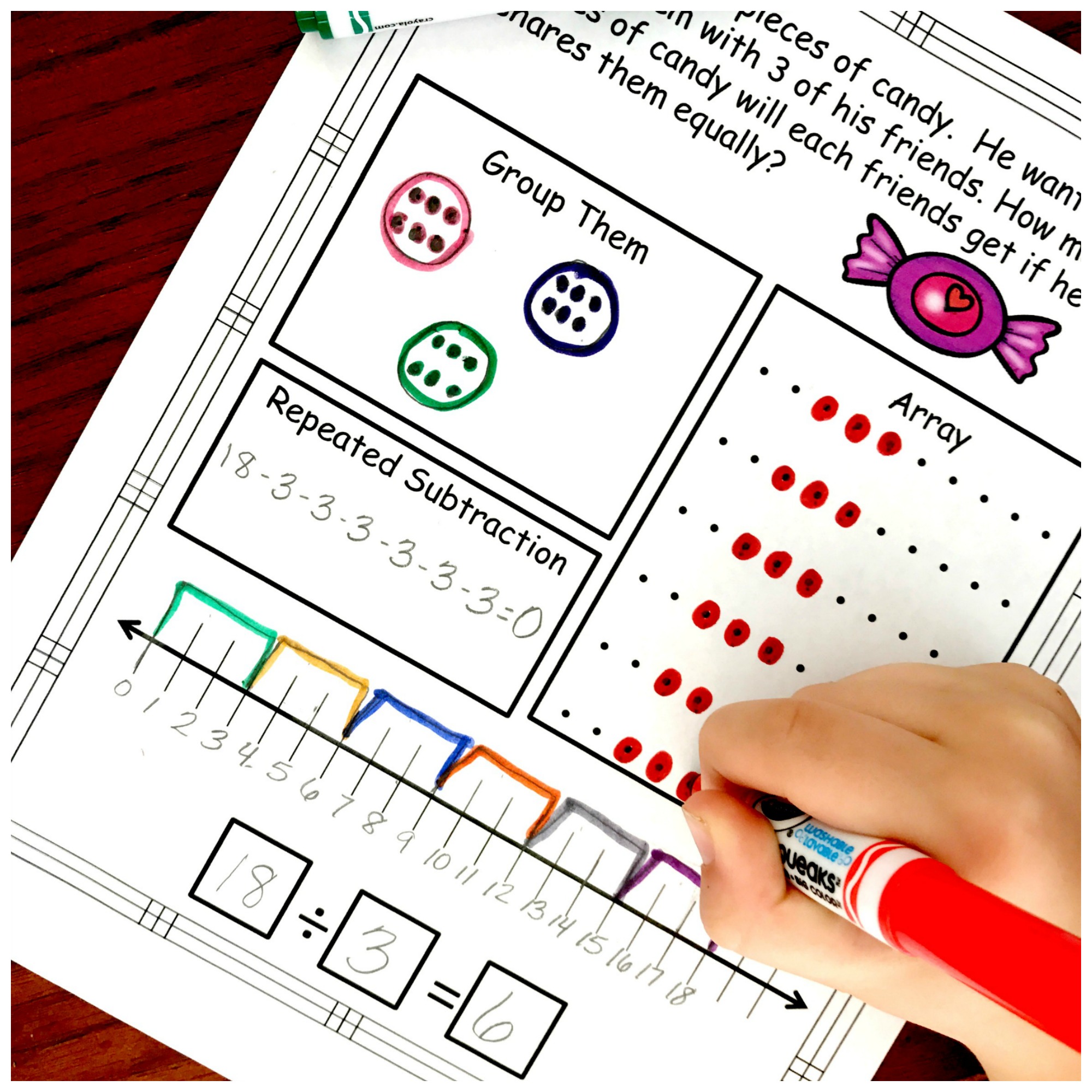
5 Fun Division Word Problems | Practice Multiple Ways of Solving | Free Printable

10 Multiplication and Division Worksheets Grade 2 | Free Printable
- Pre-algebra lessons
- Pre-algebra word problems
- Algebra lessons
- Algebra word problems
- Algebra proofs
- Advanced algebra
- Geometry lessons
- Geometry word problems
- Geometry proofs
- Trigonometry lessons
- Consumer math
- Baseball math
- Math for nurses
- Statistics made easy
- High school physics
- Basic mathematics store
- SAT Math Prep
- Math skills by grade level
- Ask an expert
- Other websites
- K-12 worksheets
- Worksheets generator
- Algebra worksheets
- Geometry worksheets
- Free math problem solver
- Pre-algebra calculators
- Algebra Calculators
- Geometry Calculators
- Math puzzles
- Math tricks
- Member login
Multiplying fractions word problems
The first two examples will show you how to model the problem with a figure.
Multiplying fractions word problems: How to do this without a figure or an illustration
Adding fractions word problems
Have A Great Basic Math Word Problem?
Share it here with a very detailed solution!
Enter Your Title
|
Entering your basic math word problem is easy to do. Just type!... |
|
Do you have a picture to add? Great! Click the button and find it on your computer. Then select it. |
Add a Picture/Graphic Caption (optional)
Click here to upload more images (optional)
Author Information (optional)
To receive credit as the author, enter your information below.
|
|
|
|
|
Submit Your Contribution
- Check box to agree to these submission guidelines .
- I am at least 16 years of age.
- I understand and accept the privacy policy .
- I understand that you will display my submission on your website.
(You can preview and edit on the next page)
What Other Visitors Have Said
Click below to see contributions from other visitors to this page...
Click here to write your own.
Recent Articles
How to explain the zero exponent rule.
Aug 17, 24 09:02 AM
How to Divide any Number by 5 in 2 Seconds
Feb 28, 24 11:07 AM
Math Trick to Square Numbers from 50 to 59
Feb 23, 24 04:46 AM
100 Tough Algebra Word Problems. If you can solve these problems with no help, you must be a genius!

Recommended
About me :: Privacy policy :: Disclaimer :: Donate Careers in mathematics
Copyright © 2008-2021. Basic-mathematics.com. All right reserved
- Home |
- About |
- Contact Us |
- Privacy |
- Newsletter |
- Shop |
- 🔍 Search Site
- Easter Color By Number Sheets
- Printable Easter Dot to Dot
- Easter Worksheets for kids
- Kindergarten
- All Generated Sheets
- Place Value Generated Sheets
- Addition Generated Sheets
- Subtraction Generated Sheets
- Multiplication Generated Sheets
- Division Generated Sheets
- Money Generated Sheets
- Negative Numbers Generated Sheets
- Fraction Generated Sheets
- Place Value Zones
- Number Bonds
- Addition & Subtraction
- Times Tables
- Fraction & Percent Zones
- All Calculators
- Fraction Calculators
- Percent calculators
- Area & Volume Calculators
- Age Calculator
- Height Calculator
- Roman Numeral Calculator
- Coloring Pages
- Fun Math Sheets
- Math Puzzles
- Mental Math Sheets
- Online Times Tables
- Online Addition & Subtraction
- Math Grab Packs
- All Math Quizzes
- 1st Grade Quizzes
- 2nd Grade Quizzes
- 3rd Grade Quizzes
- 4th Grade Quizzes
- 5th Grade Quizzes
- 6th Grade Math Quizzes
- Place Value
- Rounding Numbers
- Comparing Numbers
- Number Lines
- Prime Numbers
- Negative Numbers
- Roman Numerals
- Subtraction
- Add & Subtract
- Multiplication
- Fraction Worksheets
- Learning Fractions
- Fraction Printables
- Percent Worksheets & Help
- All Geometry
- 2d Shapes Worksheets
- 3d Shapes Worksheets
- Shape Properties
- Geometry Cheat Sheets
- Printable Shapes
- Coordinates
- Measurement
- Math Conversion
- Statistics Worksheets
- Bar Graph Worksheets
- Venn Diagrams
- All Word Problems
- Finding all possibilities
- Logic Problems
- Ratio Word Problems
- All UK Maths Sheets
- Year 1 Maths Worksheets
- Year 2 Maths Worksheets
- Year 3 Maths Worksheets
- Year 4 Maths Worksheets
- Year 5 Maths Worksheets
- Year 6 Maths Worksheets
- All AU Maths Sheets
- Kindergarten Maths Australia
- Year 1 Maths Australia
- Year 2 Maths Australia
- Year 3 Maths Australia
- Year 4 Maths Australia
- Year 5 Maths Australia
- Meet the Sallies
- Certificates
Multiplying Fractions Worksheets
Welcome to our Multiplying Fractions Worksheets page. Here you will find a range of free printable sheets and support to help your child learn to multiply fractions by integers or other fractions.
For full functionality of this site it is necessary to enable JavaScript.
Here are the instructions how to enable JavaScript in your web browser .
Quicklinks to...
Multiplying fractions calculator.
- Multiplying Fractions Support
- Multiplying Mixed Fractions
- More related Math resources
Multiplying Fractions Online Quiz
We have a calculator to help you to multiply two fractions together.
You can multiply mixed numbers or multiply a fraction by an integer too.
All the working out is shown step-by-step so you can see how it is worked out.
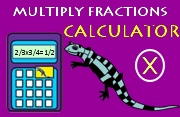
- Multiply Fractions Calculator
How to Multiply Fractions Support
This support page will help you find out all about how to multiply fractions together.
There are several worked examples and a printable support sheet.
Formula for multiplying two fractions
\[{a \over b} \times {c \over d} = {ac \over bd} \]
- How do you Multiply Fractions Support
About our Multiplying Fractions Worksheets
Here you will find a selection of Fraction worksheets designed to help your child understand how to multiply a fraction by an integer or another fraction.
The sheets are carefully graded so that the easiest sheets come first, and the most difficult sheet is the last one.
The sheets have been split into two sections:
- The first section contains sheets multiplying fractions by integers
- The second section contains sheets multiplying fractions by other fractions.
Before your child tackles multiplying fractions, they should be confident with converting improper fractions to mixed numbers, and also using simplest form.
Using these sheets will help your child to:
- multiply a fraction by a whole number;
- multiply 2 fractions together;
- apply their understanding of simplest form;
Want to test yourself to see how well you have understood this skill?
- Try our NEW quick quiz at the bottom of this page.
Multiplying Fractions by an Integer Worksheets
- Multiply fractions by integer 1
- Sheet 1 Answers
- PDF version
- Multiply fractions by integer 2
- Sheet 2 Answers
- Multiply Fractions 1
- Multiply Fractions 2
- Multiplying Fractions 3
- Sheet 3 Answers
- Multiply Fractions 4
- Sheet 4 Answers
- Multiply Fractions 5
- Sheet 5 Answers
Multiplying Fractions Walkthrough Video
This short video walkthrough shows several problems from our Multiply Fractions Worksheet 2 being solved and has been produced by the West Explains Best math channel.
If you would like some support in solving the problems on these sheets, check out the video!
More Recommended Math Resources
Take a look at some more of our worksheets and resources similar to these.
Multiplying and Dividing Fractions Support Pages
Take a look at some of our other multiplying and dividing fractions support pages if you need more help with multiplying or dividing fractions.
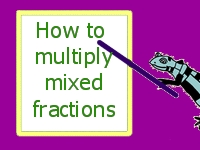
- How to Multiply Mixed Fractions support page
- How to Divide Fractions
- How to Divide Mixed Numbers
Multiplying and Dividing Fractions Worksheets
We have more worksheets to help your child learn and practice multiplying and dividing fractions.
All the sheets are carefully graded with different levels of support.
Take a look at our full range below.
- Multiplying Mixed Fractions Worksheets
- Dividing Fractions Worksheets
- Dividing Fractions by Whole Numbers
- Dividing Mixed Fractions Worksheets
- Multiplying and Dividing Fractions (Randomly Generated)
- Add Subtract Multiply Divide Fractions (Randomly Generated)
How to Convert Improper Fractions
This support page shows how to convert improper fractions to mixed numbers, and how to convert mixed numbers to improper fractions.
You will also find printable support sheets, and several practice math worksheets for this learning fractions skill.
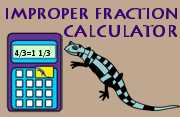
- Convert Improper Fractions Support
Simplifying Fractions
This is also sometimes called reducing fractions to their simplest form.
This involves dividing both the numerator and denominator by a common factor to reduce the fraction to the equivalent fraction with the smallest possible numerator and denominator.
The printable fraction page below contains more support, examples and practice about simplifying fractions.
- How to Simplify Fractions support page
- Simplify Fractions Practice Zone
Our quizzes have been created using Google Forms.
At the end of the quiz, you will get the chance to see your results by clicking 'See Score'.
This will take you to a new webpage where your results will be shown. You can print a copy of your results from this page, either as a pdf or as a paper copy.
For incorrect responses, we have added some helpful learning points to explain which answer was correct and why.
We do not collect any personal data from our quizzes, except in the 'First Name' and 'Group/Class' fields which are both optional and only used for teachers to identify students within their educational setting.
We also collect the results from the quizzes which we use to help us to develop our resources and give us insight into future resources to create.
For more information on the information we collect, please take a look at our Privacy Policy
We would be grateful for any feedback on our quizzes, please let us know using our Contact Us link, or use the Facebook Comments form at the bottom of the page.
This quick quiz tests your understanding and skill at multiplying fractions.
How to Print or Save these sheets 🖶
Need help with printing or saving? Follow these 3 steps to get your worksheets printed perfectly!
- How to Print support
Subscribe to Math Salamanders News
Sign up for our newsletter to get free math support delivered to your inbox each month. Plus, get a seasonal math grab pack included for free!

- Newsletter Signup
Return to 6th Grade Math Worksheets
Return to Fraction Worksheets
Return from Multiplying Fractions to Math Salamanders Homepage
Math-Salamanders.com
The Math Salamanders hope you enjoy using these free printable Math worksheets and all our other Math games and resources.
We welcome any comments about our site or worksheets on the Facebook comments box at the bottom of every page.
New! Comments
TOP OF PAGE
© 2010-2024 Math Salamanders Limited. All Rights Reserved.
- Privacy Policy
- Copyright Policy

How to Multiply Fractions in 3 Easy Steps
February 23, 2024 by Anthony Persico
Math Skills: Learn how to multiply fractions by fractions, how to multiply fractions with whole numbers, and how to multiply mixed fractions.

Free Step-by-Step Guide: How to Multiply Fractions Explained
Once you have learned how to add fractions and how to subtract fractions , you are ready to start multiplying fractions in a variety of scenarios.
This free guide will teach you everything you need to know about how to multiply fractions in the following ways:
How to Multiply Fractions by Other Fractions
How to Multiply Fractions with Whole Numbers
How to Multiply Mixed Fractions (or Mixed Numbers)
The task of having to multiply fractions together may seem challenging at first, but the procedure is actually quite simple and something that you can learn by working through a handful of practice problems, which is exactly what we will be doing in this free step-by-step guide.
While we highly recommend that you work through the guide from start to finish, you can use the quick-links above to jump to a particular topic section.
For all of the problems in this guide, we will be using an easy 3-step strategy that can be used to solve any problem where you have to multiply fractions to get a solution. So, if you can learn how to follow three easy steps, you can correctly answer any multiplying fractions problem!
Are you ready to get started?
Before we start working on the multiplying fractions practice problems, let’s do a quick recap of some key vocabulary terms related to fractions.
How to Multiply Fractions: Vocabulary Recap
This guide uses several math vocabulary terms related to fractions that you will need to be familiar with in order to learn this new math skill. Be sure that you understand the meaning of the following key vocabulary terms before moving forward in this guide.
The Numerator of a Fraction
For any fraction, the numerator is the number at the top of the fraction. For example, the fraction 4/5 has a numerator of 4 since 4 is at the top of the fraction.
The Denominator of a Fraction
For any fraction, the denominator is the number at the bottom of the fraction. For example, the fraction 4/5 has a denominator of 5 since 5 is at the bottom of the fraction.
In this guide, any mention of a numerator is referring to the top number of a fraction and any mention of a denominator is referring to bottom number of a fraction. This relationship between the numerator and the denominator of a fraction is illustrated in Figure 01-A below.

Figure 01-A: In any fraction, the numerator is the top number and the denominator is the bottom number.
Moving on, let’s recap three more key vocabulary terms and concepts related to fractions:
Whole Numbers
A whole number refers to any number that does not contain any fractions or decimals (i.e. an integer). Some examples of whole numbers include 4, 51, and 263.
Note that any whole number can be expressed in fraction form by rewriting it as a fraction with a denominator of 1. For example, the number 4 can be rewritten as a fraction as 4/1. This fact will come in handy later on when you learn how to multiply a fraction by a whole number.

Figure 01-B: How to Rewrite a Whole Number as a Fraction: Rewrite the given whole number as a fraction with a denominator of 1.
Proper Fractions
A fraction is a number that represents a part of a whole number. 1/4, 3/5, and 7/8 are all examples of fractions.
Note that proper fractions have a numerator that is smaller than the denominator.
Mixed Fractions (Mixed Numbers)
A mixed fraction (or a mixed number) is any number that represents the sum of a whole number and a proper fraction. For example, 7 5/8 is a mixed number that is equal to the sum of 7 and 5/8.
Note that mixed fractions can also be expressed as improper fractions (fractions whose numerator is greater than its denominator).

Figure 02: What is the difference between a whole number, a fraction, and a mixed number.
Now that you are familiar with these vocabulary terms, you’re ready to learn how to multiply fractions using our easy 3-step strategy.
How to Multiply Fractions by Fractions
How to multiply fractions by fractions: example #1, example #1: 1/2 x 3/4.
To solve this first example, where we are tasked with finding the product of 1/2 (one-half) and 3/4 (three-quarters), we will use the following three-step strategy for multiplying fractions:
Step One: Multiply the numerators together.
Step Two: Multiply the denominators together.
Step Three: See if the resulting fraction can be simplified or reduced.
When it comes to multiplying fractions, the process is extremely straightforward, and you can use these three steps to solve any fraction multiplication problem!
So, let’s go ahead and use these three steps to solve this first problem: 1/2 x 3/4 = ?
For this problem, we have two fractions: 1/2 x 3/4
The first step requires us to multiply the two numerators (top numbers) together as follows:
The second step requires us to multiply the two denominators (bottom numbers) together as follows:
Now we have a new fraction with a numerator of 3 and a denominator of 8 :
1/2 x 3/4 = 3/8
For the final step, we have to see if the result can be further simplified or reduced. If it can’t, our result will be our final answer.
In this case, 3/8 can not be simplified or reduced any further and we can conclude that:
Final Answer: 1/2 x 3/4 = 3/8
Figure 03 below illustrates how we solved the first example using the three-step strategy.

Figure 03: How to Multiply Fractions: Multiply the numerators together, then multiply the denominators together. Finally, simplify the resulting fraction if possible and you’re done!
Note that it’s okay if you are still a little confused. The more experience you gain using this 3-step strategy to multiply fractions, the easier these type of problems will become. Let’s go ahead and work through another example.
How to Multiply Fractions by Fractions: Example #2
Example #2: 5/6 x 4/7.
Let’s go ahead and solve Example #2 exactly the same as we did the previous example.
For step one, we have to find the product of the two numerators, 5 and 4:
For step two, we have to find the product of the two denominators, 6 and 7:
Our result is a fraction with a numerator of 20 and a denominator of 42 :
5/6 x 4/7 = 20/42
Can the result, 20/42, be reduced? The answer is yes, because both numbers have a greatest common factor of 2. So, after dividing both the numerator and the denominator by 2, we can conclude that:
Final Answer: 5/6 x 4/7 = 20/42 = 10/21
Figure 04 below illustrates how we determined that 5/6 x 4/7 = 10/21

Figure 04: How to Multiply Fractions: Be sure to express your answer in reduced form.
Next, let’s go ahead and solve one more practice problem where we’ll have to multiply one fraction by another fraction.
How to Multiply Fractions by Fractions: Example #3
Example #3: 9/16 x 7/12.
Again, we can use the same three-step strategy to solve this third example as follows:
In this case, the numerator of the first fraction is 9 and the numerator of the second fraction is 7.
In this case, the denominator of the first fraction is 16 and the denominator of the second fraction is 12.
16 x 12 = 192
Now we have a new fraction with a numerator of 62 and a denominator of 192 :
9/16 x 7/12 = 63/192
To see if this result can be reduced, we have to see if 63 and 192 both share a GCF. Since both of these numbers are divisible by 3, we can divide both the numerator and the denominator by 3 to get our final answer in reduced form:
Final Answer: 9/16 x 7/12 = 63/192 = 21/64
The graphic in Figure 05 below shows we successfully multiplied two fractions in this example.

Figure 05: How to Multiply Fractions Step-by-Step.
Now that you have some experience with multiplying fractions, let’s move onto the next section where you will learn how to multiply a fraction by a whole number and how to multiple a whole number by a fraction.
The second section of this guide will focus on how to multiply a fraction with by a whole number and how to multiply a whole number by a fraction.
Luckily, the three-step method that we used to solve problems in the previous section will work here as well. If you are unfamiliar with how to multiply a fraction by a fraction, we highly recommend that you go back and work through the above examples.
Now, let’s jump into our first example on how to multiply fractions with whole numbers!
How to Multiply a Fraction by a Whole Number: Example #1
Example #1: 3/8 x 2.
When learning how to multiply fractions with whole numbers, it is important to remember that any whole number can be rewritten as an equivalent fraction by rewriting it as a fraction with a denominator of 1.
Since any whole number can be expressed as a fraction in this way, we can solve problems where you have to multiply a fraction by a whole number simply by rewriting the whole number as a fraction and then using the same 3-step strategy from the previous section to solve it.
For this example, we can rewrite the whole number, 2, as 2/1 and rewrite the original problem as:
3/8 x 2 → 3/8 x 2/1
Now, we can find the product by using our three steps:
In this case, the numerator of the first fraction is 3 and the numerator of the second fraction is 2.
In this case, the denominator of the first fraction is 8 and the denominator of the second fraction is 1.
Finally, we are left with a new fraction with a numerator of 6 and a denominator of 8 :
3/8 x 2/1 = 6/8
And, since 6 and 8 are both divisible by 2, we know that the fraction 6/8 can be simplified to:
Final Answer: 3/8 x 2/1 = 6/8 = 3/4
Figure 06 illustrates how we solved this problem.

Figure 06: How to Multiply a Fraction by a Whole Number: Rewrite the whole number as a fraction with a denominator of 1.
Next, let’s take a look at another example of how to multiply fractions by whole numbers.
How to Multiply a Fraction by a Whole Number: Example #2
Example #2: 5/8 x 6.
For this next practice problem, we can rewrite the whole number, 6, as 6/1 and rewrite the original problem as:
5/8 x 6 → 5/8 x 6/1
From here, we can solve this problem as follows:
Start by multiplying the numerators of both fractions together:
Next, continue with multiplying the denominators of both fractions together:
Here we have a resulting fraction with a numerator of 30 and a denominator of 8 :
5/8 x 6/1 = 30/8
Notice that this result is an improper fraction since the numerator, 30, is greater than the denominator, 8. We can reduce this result down to 15/4 and leave it as our final answer or we can convert 15/4 to a mixed number, 3 3/4.
Final Answer: 5/8 x 6/1 = 30/8 = 15/4 or 3 3/4
The graphic in Figure 07 shows how we solved solve this problem by multiplying fractions by whole numbers.

Figure 07 : How to Multiply a Fraction by a Whole Number Step-by-Step.
How to Multiply a Whole Number by a Fraction: Example #3
Example #3: 9 x 2/3.
Notice that this third example requires you to multiply a whole number by a fraction (rather than a fraction by whole number like in the last two examples). Since multiplication is associative , the order of the terms won’t change the way that you solve the problem, so we can again use our three-step strategy as follows:
First, just like the previous two examples, rewrite the whole number (9 in this case) as a fraction with a denominator of 1.
9 x 2/3 → 9/1 x 2/3
Multiply the numerators together as follows:
Multiply the denominators together as follows:
The resulting fraction has a numerator of 18 and a denominator of 3 :
9/1 x 2/3 = 18/3
The resulting improper fraction, 18/3, can be simplified. Since both 18 and 3 share a GCF of 3, we can perform 18/3 = 6/1 = 6 and conclude that
Final Answer: 9/1 x 2/3 = 18/3 = 6
All of the steps for solving this example are shown in Figure 08 below.

Figure 08 How to Multiply a Whole Number by a Fraction Step-by-Step
How to Multiply a Whole Number by a Fraction: Example #4
Example #4: 12 x 7/8.
For this next example, we have to rewrite the whole number (12 in this case) as a fraction with a denominator of 1 and then use our three-step strategy to solve:
12 x 7/8 → 12/1 x 7/8
For step one, multiply both of the numerators:
12 x 7 = 84
For step two, multiply both of the denominators:
The result is a new fraction with a numerator of 84 and a denominator of 8 :
12/1 x 7/8 = 84/8
Now we have to see if 84/8 can be simplified. Both 84 and 8 share a GCF of 4, so after dividing both numbers by 4, the result is 21/2. While 21/2 can not be simplified further, it is an improper fraction that can be expressed as a mixed number, 10 1/2.
Final Answer: 12/1 x 7/8 = 84/8 = 21/2 or 10 1/2
Figure 09 below illustrates how we were able to multiply a whole number by a fraction to solve this problem.

Figure 12: Whenever you end up with an improper fraction, you will likely have to convert it to a mixed number.
Now that you know how to multiply a fraction by a whole number and how to multiply a whole number by a fraction, it’s time to move onto the final section where we will go over how to multiply mixed fractions.
How to Multiply Mixed Fractions
How to multiply fractions with mixed numbers: example #1, example #1: 3/5 x 4 1/2.
Multiplying fractions with mixed numbers can be done using our same three-step strategy, but with one small extra step at the very beginning.
Before you can solve this problem, you will have to convert the mixed number into an improper fraction.
For this example, the mixed number 4 1/2 can be rewritten as 9/2 (both of these are equivalent):
3/5 x 4 1/2 → 3/5 x 9/2
Now, we can solve 3/5 x 9/2 to find the answer to this problem as follows:
Start off multiplying the numerators of both fractions:
Continue by multiplying the denominators of both fractions:
After steps one and two, we are left with the improper fraction 27/10.
3/5 x 9/2 = 27/10
While 27/10 can not be simplified, it can be expressed as the mixed number 2 7/10.
Final Answer: 3/5 x 9/2 = 27/10 = 2 7/10
Note that 27/10 is technically a correct answer, but most problems requiring you to multiply mixed fractions will call for you to express your final answer as a mixed fraction.
See Figure 10 for step-by-step details of how we solved this problem.

Figure 10: How to Multiply Fractions with Mixed Numbers
Moving on, let’s work through one final practice problem where we will have to multiply a mixed number by another mixed number.
How to Multiply Mixed Fractions: Example #2
Example #2: 4 1/5 x 3 2/3.
For this example, notice that there are two mixed numbers.
Similar to the previous example, you will have to convert both mixed numbers into equivalent improper fractions before you can use the three-step strategy to solve:
4 1/5 = 21/5
3 2/3 = 11/3
Now we can go ahead and find the answer by solving 21/5 x 11/3
First, find the product of the numerators of both fractions:
21 x 11 = 231
Next, find the product of the denominators of both fractions:
Finally, we are left with the improper fraction 231/15
21/5 x 11/3 = 231/15
While 231/15 is a pretty ugly improper fraction, it can actually be simplified since 231 and 15 share a GCF of 3. So, after dividing both numbers by 3, we are left with 77/5.
21/5 x 11/3 = 231/15 = 77/5
Assuming that we have to express our final answer as a mixed number, we lastly have to rewrite 77/5 as 15 2/5 and we have solved the problem!
Final Answer: 21/5 x 11/3 = 231/15 = 77/5 = 15 2/5
The graphic in Figure 11 below illustrates how we used the 3-step method to solve this problem.

Figure 14: How to Multiply Fractions with Mixed Numbers (Step-by-Step)
Conclusion: How to Multiply Fractions
Multiplying fractions is an important math skill that you can master with a little bit of practice.
This guide shared a simple and effective 3-step strategy that you can use to solve any problem requiring you to multiply fractions together in any of the following scenarios:
multiplying fractions by other fractions
multiplying fractions by whole numbers
multiplying whole numbers by fractions
multiplying mixed fractions
multiplying mixed numbers
The good news is that the 3-step strategy shared in this guide can be used to solve problems for all of the above scenarios and can be summarized as follows:
The more practice you get using these three steps, the better at multiplying fractions you will become!
Keep Learning

How to Divide Fractions in 3 Easy Steps (Free Guide)

Search Tags: how to subtract fractions, subtracting fractions, how to subtract fractions with different denominators, fraction subtraction, subtracting fractions with unlike denominators, how do you subtract fractions?
High Impact Tutoring Built By Math Experts
Personalized standards-aligned one-on-one math tutoring for schools and districts
In order to access this I need to be confident with:
Fraction word prob.
Fraction word problems
Here you will learn about fraction word problems, including solving math word problems within a real-world context involving adding fractions, subtracting fractions, multiplying fractions, and dividing fractions.
Students will first learn about fraction word problems as part of number and operations—fractions in 4 th grade.
What are fraction word problems?
Fraction word problems are math word problems involving fractions that require students to use problem-solving skills within the context of a real-world situation.
To solve a fraction word problem, you must understand the context of the word problem, what the unknown information is, and what operation is needed to solve it. Fraction word problems may require addition, subtraction, multiplication, or division of fractions.
After determining what operation is needed to solve the problem, you can apply the rules of adding, subtracting, multiplying, or dividing fractions to find the solution.
For example,
Natalie is baking 2 different batches of cookies. One batch needs \cfrac{3}{4} cup of sugar and the other batch needs \cfrac{2}{4} cup of sugar. How much sugar is needed to bake both batches of cookies?
You can follow these steps to solve the problem:
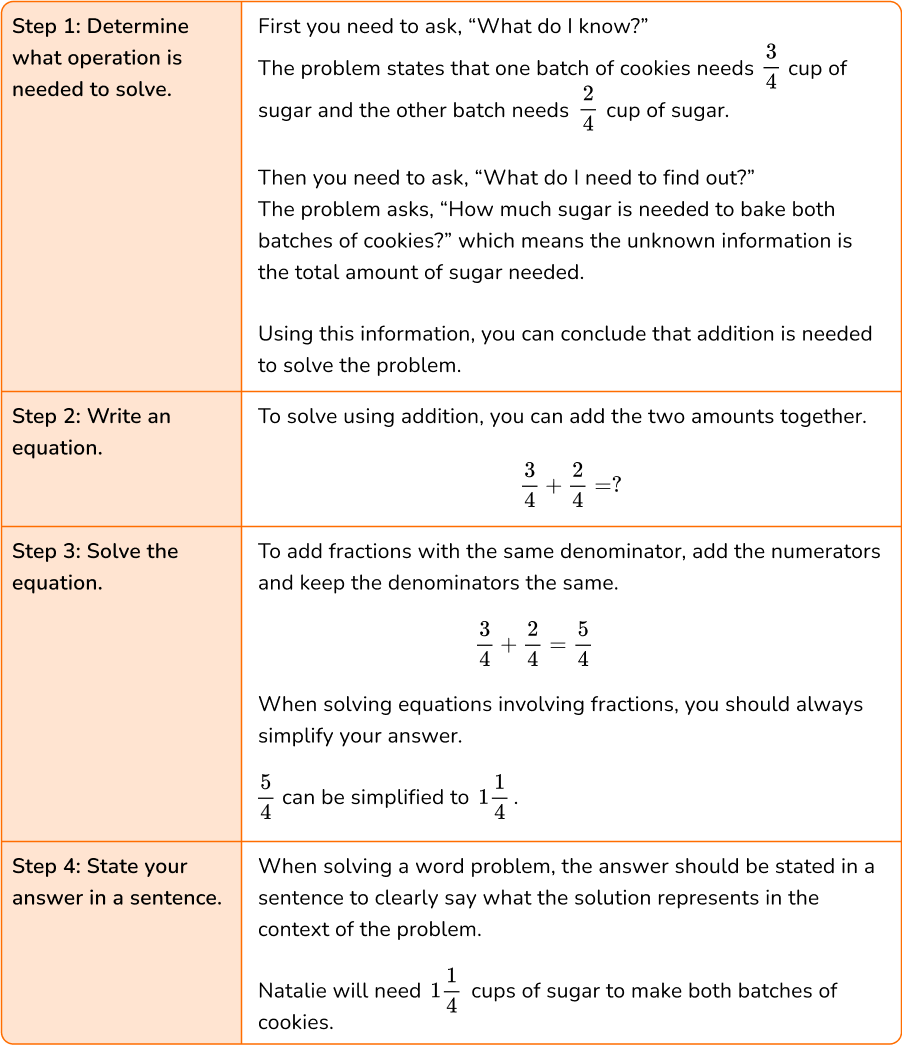
Step-by-step guide: Adding and subtracting fractions
Step-by-step guide: Adding fractions
Step-by-step guide: Subtracting fractions
Step-by-step guide: Multiplying and dividing fractions
Step-by-step guide: Multiplying fractions
Step-by-step guide: Dividing fractions
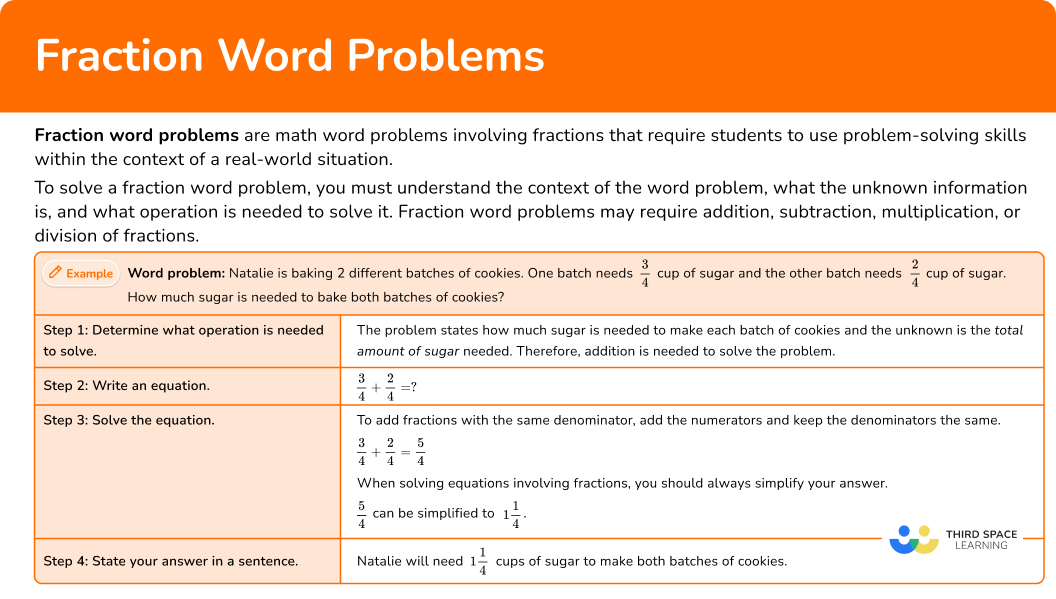
Common Core State Standards
How does this relate to 4 th grade math to 6 th grade math?
- Grade 4: Number and Operations—Fractions (4.NF.B.3d) Solve word problems involving addition and subtraction of fractions referring to the same whole and having like denominators, e.g., by using visual fraction models and equations to represent the problem.
- Grade 4: Number and Operations—Fractions (4.NF.B.4c) Solve word problems involving multiplication of a fraction by a whole number, e.g., by using visual fraction models and equations to represent the problem. For example, if each person at a party will eat \cfrac{3}{8} of a pound of roast beef, and there will be 5 people at the party, how many pounds of roast beef will be needed? Between what two whole numbers does your answer lie?
- Grade 5: Number and Operations—Fractions (5.NF.A.2) Solve word problems involving addition and subtraction of fractions referring to the same whole, including cases of unlike denominators, e.g., by using visual fraction models or equations to represent the problem. Use benchmark fractions and number sense of fractions to estimate mentally and assess the reasonableness of answers. For example, recognize an incorrect result \cfrac{2}{5}+\cfrac{1}{2}=\cfrac{3}{7} by observing that \cfrac{3}{7}<\cfrac{1}{2} .
- Grade 5: Number and Operations—Fractions (5.NF.B.6) Solve real world problems involving multiplication of fractions and mixed numbers, e.g., by using visual fraction models or equations to represent the problem.
- Grade 5: Number and Operations—Fractions (5.NF.B.7c) Solve real world problems involving division of unit fractions by non-zero whole numbers and division of whole numbers by unit fractions, e.g., by using visual fraction models and equations to represent the problem. For example, how much chocolate will each person get if 3 people share \cfrac{1}{2} \: lb of chocolate equally? How many \cfrac{1}{3} cup servings are in 2 cups of raisins?
- Grade 6: The Number System (6.NS.A.1) Interpret and compute quotients of fractions, and solve word problems involving division of fractions by fractions, e.g., by using visual fraction models and equations to represent the problem. For example, create a story context for \cfrac{2}{3} \div \cfrac{4}{5} and use a visual fraction model to show the quotient; use the relationship between multiplication and division to explain that \cfrac{2}{3} \div \cfrac{4}{5}=\cfrac{8}{9} because \cfrac{3}{4} of \cfrac{8}{9} is \cfrac{2}{3}. (In general, \cfrac{a}{b} \div \cfrac{c}{d}=\cfrac{a d}{b c} \, ) How much chocolate will each person get if 3 people share \cfrac{1}{2} \: lb of chocolate equally? How many \cfrac{3}{4} cup servings are in \cfrac{2}{3} of a cup of yogurt? How wide is a rectangular strip of land with length \cfrac{3}{4} \: m and area \cfrac{1}{2} \: m^2?
![problem solving multiplication of fraction [FREE] Fraction Operations Worksheet (Grade 4 to 6)](https://thirdspacelearning.com/wp-content/uploads/2023/07/Fraction-operations-check-for-understandin-quiz-listing-image-.png)
[FREE] Fraction Operations Worksheet (Grade 4 to 6)
Use this quiz to check your grade 4 to 6 students’ understanding of fraction operations. 10+ questions with answers covering a range of 4th to 6th grade fraction operations topics to identify areas of strength and support!
How to solve fraction word problems
In order to solve fraction word problems:
Determine what operation is needed to solve.
Write an equation.
Solve the equation.
State your answer in a sentence.
Fraction word problem examples
Example 1: adding fractions (like denominators).
Julia ate \cfrac{3}{8} of a pizza and her brother ate \cfrac{2}{8} of the same pizza. How much of the pizza did they eat altogether?
The problem states how much pizza Julia ate and how much her brother ate. You need to find how much pizza Julia and her brother ate altogether , which means you need to add.
2 Write an equation.
3 Solve the equation.
To add fractions with like denominators, add the numerators and keep the denominators the same.
4 State your answer in a sentence.
The last step is to go back to the word problem and write a sentence to clearly say what the solution represents in the context of the problem.
Julia and her brother ate \cfrac{5}{8} of the pizza altogether.
Example 2: adding fractions (unlike denominators)
Tim ran \cfrac{5}{6} of a mile in the morning and \cfrac{1}{3} of a mile in the afternoon. How far did Tim run in total?
The problem states how far Tim ran in the morning and how far he ran in the afternoon. You need to find how far Tim ran in total , which means you need to add.
To add fractions with unlike denominators, first find a common denominator and then change the fractions accordingly before adding.
\cfrac{5}{6}+\cfrac{1}{3}= \, ?
The least common multiple of 6 and 3 is 6, so 6 can be the common denominator.
That means \cfrac{1}{3} will need to be changed so that its denominator is 6. To do this, multiply the numerator and the denominator by 2.
\cfrac{1 \times 2}{3 \times 2}=\cfrac{2}{6}
Now you can add the fractions and simplify the answer.
\cfrac{5}{6}+\cfrac{2}{6}=\cfrac{7}{6}=1 \cfrac{1}{6}
Tim ran a total of 1 \cfrac{1}{6} miles.
Example 3: subtracting fractions (like denominators)
Pia walked \cfrac{4}{7} of a mile to the park and \cfrac{3}{7} of a mile back home. How much farther did she walk to the park than back home?
The problem states how far Pia walked to the park and how far she walked home. Since you need to find the difference ( how much farther ) between the two distances, you need to subtract.
To subtract fractions with like denominators, subtract the numerators and keep the denominators the same.
\cfrac{4}{7}-\cfrac{3}{7}=\cfrac{1}{7}
Pia walked \cfrac{1}{7} of a mile farther to the park than back home.

Example 4: subtracting fractions (unlike denominators)
Henry bought \cfrac{7}{8} pound of beef from the grocery store. He used \cfrac{1}{3} of a pound of beef to make a hamburger. How much of the beef does he have left?
The problem states how much beef Henry started with and how much he used. Since you need to find how much he has left , you need to subtract.
To subtract fractions with unlike denominators, first find a common denominator and then change the fractions accordingly before subtracting.
\cfrac{7}{8}-\cfrac{1}{3}= \, ?
The least common multiple of 8 and 3 is 24, so 24 can be the common denominator.
That means both fractions will need to be changed so that their denominator is 24.
To do this, multiply the numerator and the denominator of each fraction by the same number so that it results in a denominator of 24. This will give you an equivalent fraction for each fraction in the problem.
\begin{aligned}&\cfrac{7 \times 3}{8 \times 3}=\cfrac{21}{24} \\\\ &\cfrac{1 \times 8}{3 \times 8}=\cfrac{8}{24} \end{aligned}
Now you can subtract the fractions.
\cfrac{21}{24}-\cfrac{8}{24}=\cfrac{13}{24}
Henry has \cfrac{13}{24} of a pound of beef left.
Example 5: multiplying fractions
Andre has \cfrac{3}{4} of a candy bar left. He gives \cfrac{1}{2} of the remaining bit of the candy bar to his sister. What fraction of the whole candy bar does Andre have left now?
It could be challenging to determine the operation needed for this problem; many students may automatically assume it is subtraction since you need to find how much of the candy bar is left.
However, since you know Andre started with a fraction of the candy bar and you need to find a fraction OF a fraction, you need to multiply.
The difference here is that Andre did NOT give his sister \cfrac{1}{2} of the candy bar, but he gave her \cfrac{1}{2} of \cfrac{3}{4} of a candy bar.
To solve the word problem, you can ask, “What is \cfrac{1}{2} of \cfrac{3}{4}? ” and set up the equation accordingly. Think of the multiplication sign as meaning “of.”
\cfrac{1}{2} \times \cfrac{3}{4}= \, ?
To multiply fractions, multiply the numerators and multiply the denominators.
\cfrac{1}{2} \times \cfrac{3}{4}=\cfrac{3}{8}
Andre gave \cfrac{1}{2} of \cfrac{3}{4} of a candy bar to his sister, which means he has \cfrac{1}{2} of \cfrac{3}{4} left. Therefore, Andre has \cfrac{3}{8} of the whole candy bar left.
Example 6: dividing fractions
Nia has \cfrac{7}{8} cup of trail mix. How many \cfrac{1}{4} cup servings can she make?
The problem states the total amount of trail mix Nia has and asks how many servings can be made from it.
To solve, you need to divide the total amount of trail mix (which is \cfrac{7}{8} cup) by the amount in each serving ( \cfrac{1}{4} cup) to find out how many servings she can make.
To divide fractions, multiply the dividend by the reciprocal of the divisor.
\begin{aligned}& \cfrac{7}{8} \div \cfrac{1}{4}= \, ? \\\\ & \downarrow \downarrow \downarrow \\\\ &\cfrac{7}{8} \times \cfrac{4}{1}=\cfrac{28}{8} \end{aligned}
You can simplify \cfrac{28}{8} to \cfrac{7}{2} and then 3 \cfrac{1}{2}.
Nia can make 3 \cfrac{1}{2} cup servings.
Teaching tips for fraction word problems
- Encourage students to look for key words to help determine the operation needed to solve the problem. For example, subtracting fractions word problems might ask students to find “how much is left” or “how much more” one fraction is than another.
- Provide students with an answer key to word problem worksheets to allow them to obtain immediate feedback on their solutions. Encourage students to attempt the problems independently first, then check their answers against the key to identify any mistakes and learn from them. This helps reinforce problem-solving skills and confidence.
- Be sure to incorporate real-world situations into your math lessons. Doing so allows students to better understand the relevance of fractions in everyday life.
- As students progress and build a strong foundational understanding of one-step fraction word problems, provide them with multi-step word problems that involve more than one operation to solve.
- Take note that students will not divide a fraction by a fraction as shown above until 6 th grade (middle school), but they will divide a unit fraction by a whole number and a whole number by a fraction in 5 th grade (elementary school), where the same mathematical rules apply to solving.
- There are many alternatives you can use in place of printable math worksheets to make practicing fraction word problems more engaging. Some examples are online math games and digital workbooks.
Easy mistakes to make
- Misinterpreting the problem Misreading or misunderstanding the word problem can lead to solving for the wrong quantity or using the wrong operation.
- Not finding common denominators When adding or subtracting fractions with unlike denominators, students may forget to find a common denominator, leading to an incorrect answer.
- Forgetting to simplify Unless a problem specifically says not to simplify, fractional answers should always be written in simplest form.
Related fractions operations lessons
- Fractions operations
- Multiplicative inverse
- Reciprocal math
- Fractions as divisions
Practice fraction word problem questions
1. Malia spent \cfrac{5}{6} of an hour studying for a math test. Then she spent \cfrac{1}{3} of an hour reading. How much longer did she spend studying for her math test than reading?
Malia spent \cfrac{1}{2} of an hour longer studying for her math test than reading.

Malia spent \cfrac{5}{18} of an hour longer studying for her math test than reading.

Malia spent \cfrac{1}{2} of an hour longer reading than studying for her math test.
Malia spent 1 \cfrac{1}{6} of an hour longer studying for her math test than reading.
To find the difference between the amount of time Malia spent studying for her math test than reading, you need to subtract. Since the fractions have unlike denominators, you need to find a common denominator first.
You can use 6 as the common denominator, so \cfrac{1}{3} becomes \cfrac{3}{6}. Then you can subtract.
\cfrac{3}{6} can then be simplified to \cfrac{1}{2}.
Finally, you need to choose the answer that correctly answers the question within the context of the situation. Therefore, the correct answer is “Malia spent \cfrac{1}{2} of an hour longer studying for her math test than reading.”
2. A square garden is \cfrac{3}{4} of a meter wide and \cfrac{8}{9} of a meter long. What is its area?
The area of the garden is 1\cfrac{23}{36} square meters.
The area of the garden is \cfrac{27}{32} square meters.
The area of the garden is \cfrac{2}{3} square meters.
The perimeter of the garden is \cfrac{2}{3} meters.
To find the area of a square, you multiply the length and width. So to solve, you multiply the fractional lengths by mulitplying the numerators and multiplying the denominators.
\cfrac{24}{36} can be simplified to \cfrac{2}{3}.
Therefore, the correct answer is “The area of the garden is \cfrac{2}{3} square meters.”
3. Zoe ate \cfrac{3}{8} of a small cake. Liam ate \cfrac{1}{8} of the same cake. How much more of the cake did Zoe eat than Liam?
Zoe ate \cfrac{3}{64} more of the cake than Liam.
Zoe ate \cfrac{1}{4} more of the cake than Liam.
Zoe ate \cfrac{1}{8} more of the cake than Liam.
Liam ate \cfrac{1}{4} more of the cake than Zoe.
To find how much more cake Zoe ate than Liam, you subtract. Since the fractions have the same denominator, you subtract the numerators and keep the denominator the same.
\cfrac{2}{8} can be simplified to \cfrac{1}{4}.
Therefore, the correct answer is “Zoe ate \cfrac{1}{4} more of the cake than Liam.”
4. Lila poured \cfrac{11}{12} cup of pineapple and \cfrac{2}{3} cup of mango juice in a bottle. How many cups of juice did she pour into the bottle altogether?
Lila poured 1 \cfrac{7}{12} cups of juice in the bottle altogether.
Lila poured \cfrac{1}{4} cups of juice in the bottle altogether.
Lila poured \cfrac{11}{18} cups of juice in the bottle altogether.
Lila poured 1 \cfrac{3}{8} cups of juice in the bottle altogether.
To find the total amount of juice that Lila poured into the bottle, you need to add. Since the fractions have unlike denominators, you need to find a common denominator first.
You can use 12 as the common denominator, so \cfrac{2}{3} becomes \cfrac{8}{12}. Then you can add.
\cfrac{19}{12} can be simplified to 1 \cfrac{7}{12}.
Therefore, the correct answer is “Lila poured 1 \cfrac{7}{12} cups of juice in the bottle altogether.”
5. Killian used \cfrac{9}{10} of a gallon of paint to paint his living room and \cfrac{7}{10} of a gallon to paint his bedroom. How much paint did Killian use in all?
Killian used \cfrac{2}{10} gallons of paint in all.
Killian used \cfrac{1}{5} gallons of paint in all.
Killian used \cfrac{63}{100} gallons of paint in all.
Killian used 1 \cfrac{3}{5} gallons of paint in all.
To find the total amount of paint Killian used, you add the amount he used for the living room and the amount he used for the kitchen. Since the fractions have the same denominator, you add the numerators and keep the denominators the same.
\cfrac{16}{10} can be simplified to 1 \cfrac{6}{10} and then further simplified to 1 \cfrac{3}{5}.
Therefore, the correct answer is “Killian used 1 \cfrac{3}{5} gallons of paint in all.”
6. Evan pours \cfrac{4}{5} of a liter of orange juice evenly among some cups.
He put \cfrac{1}{10} of a liter into each cup. How many cups did Evan fill?
Evan filled \cfrac{2}{25} cups.
Evan filled 8 cups.
Evan filled \cfrac{9}{10} cups.
Evan filled 7 cups.
To find the number of cups Evan filled, you need to divide the total amount of orange juice by the amount being poured into each cup. To divide fractions, you mulitply the first fraction (the dividend) by the reciprocal of the second fraction (the divisor).
\cfrac{40}{5} can be simplifed to 8.
Therefore, the correct answer is “Evan filled 8 cups.”
Fraction word problems FAQs
Fraction word problems are math word problems involving fractions that require students to use problem-solving skills within the context of a real-world situation. Fraction word problems may involve addition, subtraction, multiplication, or division of fractions.
To solve fraction word problems, first you need to determine the operation. Then you can write an equation and solve the equation based on the arithmetic rules for that operation.
Fraction word problems and decimal word problems are similar because they both involve solving math problems within real-world contexts. Both types of problems require understanding the problem, determining the operation needed to solve it (addition, subtraction, multiplication, division), and solving it based on the arithmetic rules for that operation.
The next lessons are
Still stuck.
At Third Space Learning, we specialize in helping teachers and school leaders to provide personalized math support for more of their students through high-quality, online one-on-one math tutoring delivered by subject experts.
Each week, our tutors support thousands of students who are at risk of not meeting their grade-level expectations, and help accelerate their progress and boost their confidence.

Find out how we can help your students achieve success with our math tutoring programs .
[FREE] Common Core Practice Tests (3rd to 8th Grade)
Prepare for math tests in your state with these 3rd Grade to 8th Grade practice assessments for Common Core and state equivalents.
Get your 6 multiple choice practice tests with detailed answers to support test prep, created by US math teachers for US math teachers!
Privacy Overview
Multiplying Fractions Questions

Practising multiplying fractions questions with solutions is essential to improve children’s skills in fractions. Multiplication of fractions is quite simple; to multiply two fractions, we just have to multiply numerator to numerator and denominator to the denominator. Unlike addition and subtraction of fractions, while multiplying fractions, we do not have to make the denominator the same.
Learn more about fractions .
Video Lesson on Like and Unlike Fractions

Multiplying Fractions Questions with Solutions
Now let us solve questions on the multiplication of fractions.
Question 1:
Solve the following:
(ii) 9/7 × ⅜
(iii) ⅘ × ⅚
= (2 × 3)/(3 × 5)
= 6/15 reducing the fraction to the lowest form
= (9 × 3)/(7 × 8)
\(\begin{array}{l}=\frac{4}{\not{5}}\times \frac{\not{{5}}}{6}\end{array} \)
= 4/6 reducing the fraction to the lowest form
Question 2:
Simplify the following:
(i) 2½ × 3⅓
(ii) 3¼ × 5 2 / 9
(iii) 4 1 / 7 × 3 1 / 8
Converting the mixed fraction into the improper fraction
= 5/2 × 10/3
= 25/3 = 8⅓.
(ii) 3 1 / 4 × 5 2 / 9
= 13/4 × 47/9
= (13 × 47)/(4 × 9)
\(\begin{array}{l}=16\frac{35}{36}\end{array} \)
= 29/7 × 25/8
= (29 × 25)/(7 × 8)
\(\begin{array}{l}=12\frac{53}{56}\end{array} \)
Also, Refer:
- Mixed to Improper Fractions
- Mixed to Improper Fraction Calculator
- Improper to Mixed Fraction Calculator
Question 3:
Work out the following and express them in the simplest form:
(i) 22/3 ÷ 11/5
(ii) 34/35 ÷ 6/7
(iii) 56/3 ÷ 9/17
Convert the division into multiplication by taking the reciprocal of the divisor fraction
= 22/3 × 5/11
= 34/35 × 7/6
\(\begin{array}{l}=1\frac{2}{15}\end{array} \)
= 56/3 × 17/9
\(\begin{array}{l}=35\frac{7}{27}\end{array} \)
Question 4:
(i) 26 × 1/13 ÷ 5/169
(ii) 6.4 × ⅘ ÷ ⅔
(iii) 2.98 ÷ ¾ × ⅖
According to the BODMAS rule, we first perform division followed by multiplication.
= 26 × (1/13 ÷ 5/169)
= 26 × (1/13 × 169/5)
= 26 × 13/5
\(\begin{array}{l}=67\frac{3}{5}\end{array} \)
= 64/10 × (⅘ ÷ ⅔)
= 64/10 × (⅘ × 3/2)
= 64/10 × 6/5
\(\begin{array}{l}=7\frac{17}{25}\end{array} \)
= (298/100 ÷ 3/4) × ⅖
= (298/100 × 4/3) × ⅖
= 298/(25 × 3) × ⅖
= 298/75 × ⅖
Question 5:
The length and the width of a rectangular park are 39/4 m and 25/3 m, respectively. Find the area of the park.
Length of the park = 39/4
Width of the park = 25/3
Area of the rectangular park = 39/4 × 25/3
= (13 × 25)/4 = 325/4 = 81.25 m 2 .
Question 6:
A household has an overhead water tank of 1000 litres. Every day 4/5th of the tank is used for household purposes. Find the amount of water needed for a week.
The capacity of the tank = 1000 litres
Amount of water used everyday = 4/5th of 1000 litres
= ⅘ × 1000 = 4 × 200 = 800 litres
Amount of water required for a week = 7 × 800 = 5600 litres.
Question 7:
A farmer plants the sapling of a plant at a uniform distance of 5/3 cm. If he plants 27 such saplings in a row, find the total distance between the first and the last sapling.
Distance between each sapling = 5/3 cm
Number of saplings in a row = 27
Distance between first and the last sapling = 5/3 × 27 = 5 × 9 = 45 cm.
Question 8:
The area of the triangle is 145/3 cm 2 . If the base length of the triangle is ⅔ cm, find the height of the triangle.
The base of the triangle = ⅔ cm
Area of the triangle = ½ × base × height = 145/3 cm 2
⇒ ½ × ⅔ × height = 145/3
⇒ height = 145/3 ÷ ⅓
⇒ height = 145/3 × 3 = 145 cm
Question 9:
Find the following:
(i) 2/5th of a day.
(ii) ¼th of a kilometre.
(iii) 3/4th of a year.
(i) 2/5th of a day
Now, 1 day = 24 hours
⅖ × 24 hours = 48/5
= 9.6 hours
= 9 hours 36 minutes.
(ii) ¼th of a kilometre
1 km = 1000 m
1 year = 12 months
3/4 × 12 = 9 months.
Question 10:
In a class of 60 students, two-thirds are boys. How many girls are there in the class?
Number of students = 60
Number of boys = 60 × ⅔ = 40
Number of girls = 60 – 40 = 20.
|
|
|
|
|
|
Practice Questions on Multiplying Fractions
1. Evaluate the following:
(ii) 4/7 × 9/21
(iii) 45/7 × 3½
(iv) 19 6 / 7 × 13½
(vi) 34/5 ÷ 6/7
(vii) 2 ÷ ⅘
(viii) ⅞ ÷ 13
(ix) ⅚ ÷ 9 6 / 5
(x) 12 × ¾ ÷ 1/2
2. Find the base of the triangle whose height is 4⅗ cm and the area is 28/35 cm 2 .
3. Three times more flour is needed to make a large cake than a small one. If 3⅕ kg flour is needed to make a large size cake, how much flour is needed to make a small size cake?
Keep visiting BYJU’S to get more such Maths lessons in a simple, concise and easy-to-understand way. Also, register at BYJU’S – The Learning App to get complete assistance for Maths preparation with video lessons, notes, tips and other study materials.
| MATHS Related Links | |
Register with BYJU'S & Download Free PDFs
Register with byju's & watch live videos.

Multiplying Fractions Practice Questions
Click here for questions, click here for answers.
multiplication
GCSE Revision Cards

5-a-day Workbooks

Primary Study Cards

Privacy Policy
Terms and Conditions
Corbettmaths © 2012 – 2024
Worksheet on Multiplication of Fractions
In worksheet on multiplication of fractions, the questions are based on multiplying fractions; finding products; simplifying fractions to its lowest terms and also word problems on multiplying fractions . This exercise sheet on multiply fractions has different types of questions that can be practiced by the seventh grade math students to get more ideas to solve all types of questions in worksheet on multiplication of fractions.
1. Multiply the fractions: (i) 7/11 by 3/5 (ii) 3/5 by 25 (iii) 3⁴/₁₅ by 24 (iv) 3¹/₈ by 4\(\frac{10}{11}\)
2. Find the product of the fractions:
(i) 4/7 × 14/25 (ii) 7¹/₂ × 2⁴/₁₅ (iii) 3⁶/₇ × 4²/₃ (iv) 6¹¹/₁₄ × 3¹/₂ 3. Simplify the fractions: (i) 12/25 × 15/28 × 35/36 (ii) 10/27 × 39/56 × 28/65 (iii) 2²/₁₇ × 7²/₉ × 1³³/₅₂
4. Find the product of the fractions: (i) 1/2 of 4²/₉ (ii) 5/8 of 9²/₃ (iii) 2/3 of 9/16
5. Which is greater? 1/2 of 6/7 or 2/3 of 3/7
6. Find: (i) 7/11 of $ 330 (ii) 5/9 of 108 meters (iii) 3/7 of 42 litres (iv) 1/12 of an hour (v) 5/6 of a year (vi) 3/20 of a kg (vii) 7/20 of a litre (viii) 5/6 of a day (ix) 2/7 of a week 7. Sara plants 4 saplings in a row in her garden. The distance between two adjacent saplings is 3/4 m. Find the distance between the first and the last sapling. 8. Ronald reads 1/3 part of a book in 1 hour. How much part of the book will he read in 2¹/₅ hours? 9. Laura reads a book for 1³/₄ hours every day. She reads the entire book in 6 days. How many hours in all were required by her to read the book? 10. Find the area of a rectangular park which is 41²/₃ m long and 18³/₅ m broad. 11. If milk is available at $ 17³/₄ per litre, find the cost of 7²/₅ litres of milk. 12. Sharon can walk 8¹/₃ km in one hour. How much distance will she cover in 2²/₅ hours? 13. A sugar bag contains 30 kg of sugar. After consuming bag ²/₃ of it, how much sugar is left in the bag? 14. Each side of a square is 6²/₃ m long. Find its area. 15. There are 45 students in a class and 3/5 of them are boys. How many girls are there in the class?
Students can check the answers of the worksheet on multiplication of fractions given below to make sure that the answers are correct.
1. (i) 21/55 (ii) 15 (iii) 78²/₅ (iv) 15¹⁵/₄₄
2. (i) 8/25 (ii) 17 (iii) 18 (iv) 23³/₄ 3. (i) 1/4 (ii) 1/9 (iii) 25 4. (i) 2¹/₉ (ii) 6¹/₂₄ (iii) 3/8
5. 1/2 of 6/7
6. (i) $ 210 (ii) 60 meters (iii) 18 litres (iv) 5 minutes (v) 10 months (vi) 150 gms (vii) 350 ml (viii) 20 hours (ix) 2 days 7. 3 m 8. 11/15 9. 10¹/₂ hours 10. 775 m² 11. $ 131⁷/₂₀ 12. 20 km 13. 10 kg 14. 44⁴/₉ m² 15. 18
If students have any queries regarding the questions given in the worksheet on multiplication of fractions, please fill-up the comment box so that we can help you. However, suggestions for further improvement, from all quarters would be greatly appreciated.
● Fractions
Types of Fractions
Equivalent Fractions
Like and Unlike Fractions
Conversion of Fractions
Fraction in Lowest Terms
Addition and Subtraction of Fractions
Multiplication of Fractions
Division of Fractions
● Fractions - Worksheets
Worksheet on Fractions
Worksheet on Division of Fractions
7th Grade Math Problems Math Homework Sheets From Worksheet on Multiplication of Fractions to HOME PAGE
Didn't find what you were looking for? Or want to know more information about Math Only Math . Use this Google Search to find what you need.
New! Comments
Share this page: What’s this?
- Preschool Activities
- Kindergarten Math
- 1st Grade Math
- 2nd Grade Math
- 3rd Grade Math
- 4th Grade Math
- 5th Grade Math
- 6th Grade Math
- 7th Grade Math
- 8th Grade Math
- 9th Grade Math
- 10th Grade Math
- 11 & 12 Grade Math
- Concepts of Sets
- Probability
- Boolean Algebra
- Math Coloring Pages
- Multiplication Table
- Cool Maths Games
- Math Flash Cards
- Online Math Quiz
- Math Puzzles
- Binary System
- Math Dictionary
- Conversion Chart
- Homework Sheets
- Math Problem Ans
- Free Math Answers
- Printable Math Sheet
- Funny Math Answers
- Employment Test
- Math Patterns
- Link Partners
- Privacy Policy
| E-mail Address | |
| First Name | |
| to send you Math Only Math. |
Recent Articles
Construction of perpendicular lines by using a protractor, set-square.
Aug 17, 24 05:49 PM
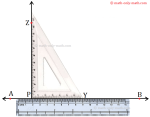
Constructing a Line Segment |Construction of Line Segment|Constructing
Aug 16, 24 04:35 PM

Construction of a Circle | Working Rules | Step-by-step Explanation |
Aug 13, 24 01:27 AM

Practical Geometry | Ruler | Set-Squares | Protractor |Compass|Divider
Aug 12, 24 03:20 PM
Worksheet on Word Problems on Fractions | Fraction Word Problems | Ans
Aug 12, 24 02:23 AM

© and ™ math-only-math.com. All Rights Reserved. 2010 - 2024.
If you're seeing this message, it means we're having trouble loading external resources on our website.
If you're behind a web filter, please make sure that the domains *.kastatic.org and *.kasandbox.org are unblocked.
To log in and use all the features of Khan Academy, please enable JavaScript in your browser.
Course: 4th grade > Unit 9
- Multiplying fractions word problem: milk
- Multiplying fractions word problem: movies
- Multiplying fractions by whole numbers word problem
Multiply fractions and whole numbers word problems
- Interpret multiplying fraction and whole number word problems
- Your answer should be
- a proper fraction, like 1 / 2 or 6 / 10
- an improper fraction, like 10 / 7 or 14 / 8

In order to continue enjoying our site, we ask that you confirm your identity as a human. Thank you very much for your cooperation.
Fraction Worksheets
Conversion :: Addition :: Subtraction :: Multiplication :: Division
Conversions
Fractions - addition, fractions - subtraction, fractions - multiplication, fractions - division.

Reading & Math for K-5
- Kindergarten
- Learning numbers
- Comparing numbers
- Place Value
- Roman numerals
- Subtraction
- Multiplication
- Order of operations
- Drills & practice
- Measurement
- Factoring & prime factors
- Proportions
- Shape & geometry
- Data & graphing
- Word problems
- Children's stories
- Leveled Stories
- Sentences & passages
- Context clues
- Cause & effect
- Compare & contrast
- Fact vs. fiction
- Fact vs. opinion
- Main idea & details
- Story elements
- Conclusions & inferences
- Sounds & phonics
- Words & vocabulary
- Reading comprehension
- Early writing
- Numbers & counting
- Simple math
- Social skills
- Other activities
- Dolch sight words
- Fry sight words
- Multiple meaning words
- Prefixes & suffixes
- Vocabulary cards
- Other parts of speech
- Punctuation
- Capitalization
- Narrative writing
- Opinion writing
- Informative writing
- Cursive alphabet
- Cursive letters
- Cursive letter joins
- Cursive words
- Cursive sentences
- Cursive passages
- Grammar & Writing
Breadcrumbs
- Word Problems
- Fractions times whole numbers
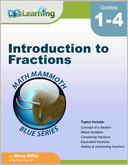
Download & Print Only $5.90
Multiplying fractions word problems
Word problem worksheets: multiply fractions by whole numbers.
Below are three versions of our grade 4 math worksheet with word problems involving the multiplication of fractions by whole numbers. students are asked to answer and interpret word problems where fractional amounts are multiplied by whole numbers. They are also asked to simplify answers if possible. These worksheets are pdf files .

These worksheets are available to members only.
Join K5 to save time, skip ads and access more content. Learn More
More word problem worksheets
Explore all of our math word problem worksheets , from kindergarten through grade 5.
What is K5?
K5 Learning offers free worksheets , flashcards and inexpensive workbooks for kids in kindergarten to grade 5. Become a member to access additional content and skip ads.
Our members helped us give away millions of worksheets last year.
We provide free educational materials to parents and teachers in over 100 countries. If you can, please consider purchasing a membership ($24/year) to support our efforts.
Members skip ads and access exclusive features.
Learn about member benefits
This content is available to members only.
- Forgot Password?

Or search by topic
Number and algebra.
- Place value and the number system
- Fractions, decimals, percentages, ratio and proportion
- Calculations and numerical methods
- Algebraic expressions, equations and formulae
- Coordinates, functions and graphs
- Patterns, sequences and structure
- Properties of numbers
Geometry and measure
- 3D geometry, shape and space
- Transformations and constructions
- Vectors and matrices
- Measuring and calculating with units
- Pythagoras and trigonometry
- Angles, polygons, and geometrical proof
Probability and statistics
- Handling, processing and representing data
- Probability (spec_group)
Working mathematically
- Thinking mathematically
- Mathematical mindsets
Advanced mathematics
- Decision mathematics and combinatorics
- Advanced probability and statistics
For younger learners
- Early years foundation stage
Multiplication and Division KS1
This collection is one of our Primary Curriculum collections - tasks that are grouped by topic.
Magic Plant
The Amazing Splitting Plant
Catrina's Cards
Number detective, the tomato and the bean.
Share Bears
Lots of Lollies
Ring a Ring of Numbers
More Numbers in the Ring
Are you well Balanced?
Clapping Times
Growing Garlic
Lots of Biscuits!
Even and odd
Our Numbers
Pairs of legs
Two numbers under the microscope.
Odd times Even
Doubling Fives
Double or Halve?
Always, Sometimes or Never?
Birthday Sharing
Tables Teaser

Integers Worksheets
Welcome to the integers worksheets page at Math-Drills.com where you may have a negative experience, but in the world of integers, that's a good thing! This page includes Integers worksheets for comparing and ordering integers, adding, subtracting, multiplying and dividing integers and order of operations with integers.
If you've ever spent time in Canada in January, you've most likely experienced a negative integer first hand. Banks like you to keep negative balances in your accounts, so they can charge you loads of interest. Deep sea divers spend all sorts of time in negative integer territory. There are many reasons why a knowledge of integers is helpful even if you are not going to pursue an accounting or deep sea diving career. One hugely important reason is that there are many high school mathematics topics that will rely on a strong knowledge of integers and the rules associated with them.
We've included a few hundred integers worksheets on this page to help support your students in their pursuit of knowledge. You may also want to get one of those giant integer number lines to post if you are a teacher, or print off a few of our integer number lines. You can also project them on your whiteboard or make an overhead transparency. For homeschoolers or those with only one or a few students, the paper versions should do. The other thing that we highly recommend are integer chips a.k.a. two-color counters. Read more about them below.
Most Popular Integers Worksheets this Week
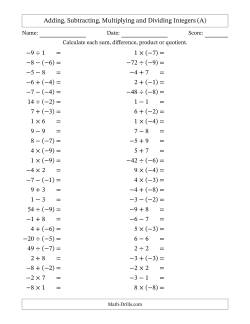
Integer Resources
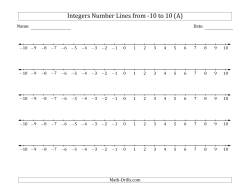
Coordinate graph paper can be very useful when studying integers. Coordinate geometry is a practical application of integers and can give students practice with using integers while learning another related skill. Coordinate graph paper can be found on the Graph Paper page:
Coordinate Graph Paper
Integer number lines can be used for various math activities including operations with integers, counting, comparing, ordering, etc.
- Integer Number Lines Integers Number Lines from -10 to 10 Integers Number Lines from -15 to 15 Integers Number Lines from -20 to 20 Integers Number Lines from -25 to 25 OLD Integer Number Lines
Comparing and Ordering Integers
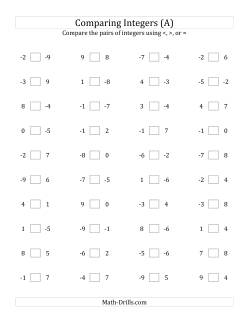
For students who are just starting with integers, it is very helpful if they can use an integer number line to compare integers and to see how the placement of integers works. They should quickly realize that negative numbers are counter-intuitive because they are probably quite used to larger absolute values meaning larger numbers. The reverse is the case, of course, with negative numbers. Students should be able to recognize easily that a positive number is always greater than a negative number and that between two negative integers, the one with the lesser absolute value is actually the greater number. Have students practice with these integers worksheets and follow up with the close proximity comparing integers worksheets.
- Comparing Integers Worksheets Comparing Positive and Negative Integers (-9 to +9) Comparing Positive and Negative Integers (-15 to +15) Comparing Positive and Negative Integers (-25 to +25) Comparing Positive and Negative Integers (-50 to +50) Comparing Positive and Negative Integers (-99 to +99) Comparing Negative Integers (-15 to -1)
By close proximity, we mean that the integers being compared differ very little in value. Depending on the range, we have allowed various differences between the two integers being compared. In the first set where the range is -9 to 9, the difference between the two numbers is always 1. With the largest range, a difference of up to 5 is allowed. These worksheets will help students further hone their ability to visualize and conceptualize the idea of negative numbers and will serve as a foundation for all the other worksheets on this page.
- Comparing Integers in Close Proximity Comparing Positive and Negative Integers (-9 to +9) in Close Proximity Comparing Positive and Negative Integers (-15 to +15) in Close Proximity Comparing Positive and Negative Integers (-25 to +25) in Close Proximity Comparing Positive and Negative Integers (-50 to +50) in Close Proximity Comparing Positive and Negative Integers (-99 to +99) in Close Proximity
- Ordering Integers Worksheets Ordering Integers on a Number Line Ordering Integers (range -9 to 9) Ordering Integers (range -20 to 20) Ordering Integers (range -50 to 50) Ordering Integers (range -99 to 99) Ordering Integers (range -999 to 999) Ordering Negative Integers (range -9 to -1) Ordering Negative Integers (range -99 to -10) Ordering Negative Integers (range -999 to -100)
Adding and Subtracting Integers
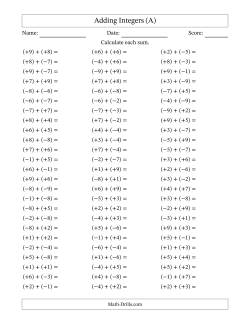
Two-color counters are fantastic manipulatives for teaching and learning about integer addition. Two-color counters are usually plastic chips that come with yellow on one side and red on the other side. They might be available in other colors, so you'll have to substitute your own colors in the following description.
Adding with two-color counters is actually quite easy. You model the first number with a pile of chips flipped to the correct side and you also model the second number with a pile of chips flipped to the correct side; then you mash them all together, take out the zeros (if any) and behold, you have your answer! Need further elaboration? Read on!
The correct side means using red to model negative numbers and yellow to model positive numbers. You would model —5 with five red chips and 7 with seven yellow chips. Mashing them together should be straight forward although, you'll want to caution your students to be less exuberant than usual, so none of the chips get flipped. Taking out the zeros means removing as many pairs of yellow and red chips as you can. You can do this because —1 and 1 when added together equals zero (this is called the zero principle). If you remove the zeros, you don't affect the answer. The benefit of removing the zeros, however, is that you always end up with only one color and as a consequence, the answer to the integer question. If you have no chips left at the end, the answer is zero!
- Adding Integers Worksheets with 75 Questions Per Page (Some Parentheses) Adding Integers from -9 to 9 (75 Questions) ✎ Adding Integers from -12 to 12 (75 Questions) ✎ Adding Integers from -15 to 15 (75 Questions) ✎ Adding Integers from -20 to 20 (75 Questions) ✎ Adding Integers from -25 to 25 (75 Questions) ✎ Adding Integers from -50 to 50 (75 Questions) ✎ Adding Integers from -99 to 99 (75 Questions) ✎
- Adding Integers Worksheets with 75 Questions Per Page (All Parentheses) Adding Integers from (-9) to (+9) All Parentheses (75 Questions) ✎ Adding Integers from (-12) to (+12) All Parentheses (75 Questions) ✎ Adding Integers from (-15) to (+15) All Parentheses (75 Questions) ✎ Adding Integers from (-20) to (+20) All Parentheses (75 Questions) ✎ Adding Integers from (-25) to (+25) All Parentheses (75 Questions) ✎ Adding Integers from (-50) to (+50) All Parentheses (75 Questions) ✎ Adding Integers from (-99) to (+99) All Parentheses (75 Questions) ✎
- Adding Integers Worksheets with 75 Questions Per Page (No Parentheses) Adding Integers from -9 to 9 No Parentheses (75 Questions) ✎ Adding Integers from -12 to 12 No Parentheses (75 Questions) ✎ Adding Integers from -15 to 15 No Parentheses (75 Questions) ✎ Adding Integers from -20 to 20 No Parentheses (75 Questions) ✎ Adding Integers from -25 to 25 No Parentheses (75 Questions) ✎ Adding Integers from -50 to 50 No Parentheses (75 Questions) ✎ Adding Integers from -99 to 99 No Parentheses (75 Questions) ✎
- Adding Integers Worksheets with 50 Questions Per Page (Some Parentheses) Adding Integers from -9 to 9 (50 Questions) ✎ Adding Integers from -12 to 12 (50 Questions) ✎ Adding Integers from -15 to 15 (50 Questions) ✎ Adding Integers from -20 to 20 (50 Questions) ✎ Adding Integers from -25 to 25 (50 Questions) ✎ Adding Integers from -50 to 50 (50 Questions) ✎ Adding Integers from -99 to 99 (50 Questions) ✎
- Adding Integers Worksheets with 50 Questions Per Page (All Parentheses) Adding Integers from (-9) to (+9) All Parentheses (50 Questions) ✎ Adding Integers from (-12) to (+12) All Parentheses (50 Questions) ✎ Adding Integers from (-15) to (+15) All Parentheses (50 Questions) ✎ Adding Integers from (-20) to (+20) All Parentheses (50 Questions) ✎ Adding Integers from (-25) to (+25) All Parentheses (50 Questions) ✎ Adding Integers from (-50) to (+50) All Parentheses (50 Questions) ✎ Adding Integers from (-99) to (+99) All Parentheses (50 Questions) ✎
- Adding Integers Worksheets with 50 Questions Per Page (No Parentheses) Adding Integers from -9 to 9 No Parentheses (50 Questions) ✎ Adding Integers from -12 to 12 No Parentheses (50 Questions) ✎ Adding Integers from -15 to 15 No Parentheses (50 Questions) ✎ Adding Integers from -20 to 20 No Parentheses (50 Questions) ✎ Adding Integers from -25 to 25 No Parentheses (50 Questions) ✎ Adding Integers from -50 to 50 No Parentheses (50 Questions) ✎ Adding Integers from -99 to 99 No Parentheses (50 Questions) ✎
- Adding Integers Worksheets with 25 Large Print Questions Per Page (Some Parentheses) Adding Integers from -9 to 9 (Large Print; 25 Questions) ✎ Adding Integers from -12 to 12 (Large Print; 25 Questions) ✎ Adding Integers from -15 to 15 (Large Print; 25 Questions) ✎ Adding Integers from -20 to 20 (Large Print; 25 Questions) ✎ Adding Integers from -25 to 25 (Large Print; 25 Questions) ✎ Adding Integers from -50 to 50 (Large Print; 25 Questions) ✎ Adding Integers from -99 to 99 (Large Print; 25 Questions) ✎
- Adding Integers Worksheets with 25 Large Print Questions Per Page (All Parentheses) Adding Integers from (-9) to (+9) All Parentheses (Large Print; 25 Questions) ✎ Adding Integers from (-12) to (+12) All Parentheses (Large Print; 25 Questions) ✎ Adding Integers from (-15) to (+15) All Parentheses (Large Print; 25 Questions) ✎ Adding Integers from (-20) to (+20) All Parentheses (Large Print; 25 Questions) ✎ Adding Integers from (-25) to (+25) All Parentheses (Large Print; 25 Questions) ✎ Adding Integers from (-50) to (+50) All Parentheses (Large Print; 25 Questions) ✎ Adding Integers from (-99) to (+99) All Parentheses (Large Print; 25 Questions) ✎
- Adding Integers Worksheets with 25 Large Print Questions Per Page (No Parentheses) Adding Integers from -9 to 9 No Parentheses (Large Print; 25 Questions) ✎ Adding Integers from -12 to 12 No Parentheses (Large Print; 25 Questions) ✎ Adding Integers from -15 to 15 No Parentheses (Large Print; 25 Questions) ✎ Adding Integers from -20 to 20 No Parentheses (Large Print; 25 Questions) ✎ Adding Integers from -25 to 25 No Parentheses (Large Print; 25 Questions) ✎ Adding Integers from -50 to 50 No Parentheses (Large Print; 25 Questions) ✎ Adding Integers from -99 to 99 No Parentheses (Large Print; 25 Questions) ✎
- Vertically Arranged Integer Addition Worksheets 3-Digit Integer Addition (Vertically Arranged) 3-Digit Positive Plus a Negative Integer Addition (Vertically Arranged) 3-Digit Negative Plus a Positive Integer Addition (Vertically Arranged) 3-Digit Negative Plus a Negative Integer Addition (Vertically Arranged)
Subtracting with integer chips is a little different. Integer subtraction can be thought of as removing. To subtract with integer chips, begin by modeling the first number (the minuend) with integer chips. Next, remove the chips that would represent the second number from your pile and you will have your answer. Unfortunately, that isn't all there is to it. This works beautifully if you have enough of the right color chip to remove, but often times you don't. For example, 5 - (-5), would require five yellow chips to start and would also require the removal of five red chips, but there aren't any red chips! Thank goodness, we have the zero principle. Adding or subtracting zero (a red chip and a yellow chip) has no effect on the original number, so we could add as many zeros as we wanted to the pile, and the number would still be the same. All that is needed then is to add as many zeros (pairs of red and yellow chips) as needed until there are enough of the correct color chip to remove. In our example 5 - (-5), you would add 5 zeros, so that you could remove five red chips. You would then be left with 10 yellow chips (or +10) which is the answer to the question.
- Subtracting Integers Worksheets with 75 Questions Per Page (Some Parentheses) Subtracting Integers from -9 to 9 (75 Questions) ✎ Subtracting Integers from -12 to 12 (75 Questions) ✎ Subtracting Integers from -15 to 15 (75 Questions) ✎ Subtracting Integers from -20 to 20 (75 Questions) ✎ Subtracting Integers from -25 to 25 (75 Questions) ✎ Subtracting Integers from -50 to 50 (75 Questions) ✎ Subtracting Integers from -99 to 99 (75 Questions) ✎
- Subtracting Integers Worksheets with 75 Questions Per Page (All Parentheses) Subtracting Integers from (-9) to (+9) All Parentheses (75 Questions) ✎ Subtracting Integers from (-12) to (+12) All Parentheses (75 Questions) ✎ Subtracting Integers from (-15) to (+15) All Parentheses (75 Questions) ✎ Subtracting Integers from (-20) to (+20) All Parentheses (75 Questions) ✎ Subtracting Integers from (-25) to (+25) All Parentheses (75 Questions) ✎ Subtracting Integers from (-50) to (+50) All Parentheses (75 Questions) ✎ Subtracting Integers from (-99) to (+99) All Parentheses (75 Questions) ✎
- Subtracting Integers Worksheets with 75 Questions Per Page (No Parentheses) Subtracting Integers from -9 to 9 No Parentheses (75 Questions) ✎ Subtracting Integers from -12 to 12 No Parentheses (75 Questions) ✎ Subtracting Integers from -15 to 15 No Parentheses (75 Questions) ✎ Subtracting Integers from -20 to 20 No Parentheses (75 Questions) ✎ Subtracting Integers from -25 to 25 No Parentheses (75 Questions) ✎ Subtracting Integers from -50 to 50 No Parentheses (75 Questions) ✎ Subtracting Integers from -99 to 99 No Parentheses (75 Questions) ✎
- Subtracting Integers Worksheets with 50 Questions Per Page (Some Parentheses) Subtracting Integers from -9 to 9 (50 Questions) ✎ Subtracting Integers from -12 to 12 (50 Questions) ✎ Subtracting Integers from -15 to 15 (50 Questions) ✎ Subtracting Integers from -20 to 20 (50 Questions) ✎ Subtracting Integers from -25 to 25 (50 Questions) ✎ Subtracting Integers from -50 to 50 (50 Questions) ✎ Subtracting Integers from -99 to 99 (50 Questions) ✎
- Subtracting Integers Worksheets with 50 Questions Per Page (All Parentheses) Subtracting Integers from (-9) to (+9) All Parentheses (50 Questions) ✎ Subtracting Integers from (-12) to (+12) All Parentheses (50 Questions) ✎ Subtracting Integers from (-15) to (+15) All Parentheses (50 Questions) ✎ Subtracting Integers from (-20) to (+20) All Parentheses (50 Questions) ✎ Subtracting Integers from (-25) to (+25) All Parentheses (50 Questions) ✎ Subtracting Integers from (-50) to (+50) All Parentheses (50 Questions) ✎ Subtracting Integers from (-99) to (+99) All Parentheses (50 Questions) ✎
- Subtracting Integers Worksheets with 50 Questions Per Page (No Parentheses) Subtracting Integers from -9 to 9 No Parentheses (50 Questions) ✎ Subtracting Integers from -12 to 12 No Parentheses (50 Questions) ✎ Subtracting Integers from -15 to 15 No Parentheses (50 Questions) ✎ Subtracting Integers from -20 to 20 No Parentheses (50 Questions) ✎ Subtracting Integers from -25 to 25 No Parentheses (50 Questions) ✎ Subtracting Integers from -50 to 50 No Parentheses (50 Questions) ✎ Subtracting Integers from -99 to 99 No Parentheses (50 Questions) ✎
- Subtracting Integers Worksheets with 25 Large Print Questions Per Page (Some Parentheses) Subtracting Integers from -9 to 9 (Large Print; 25 Questions) ✎ Subtracting Integers from -12 to 12 (Large Print; 25 Questions) ✎ Subtracting Integers from -15 to 15 (Large Print; 25 Questions) ✎ Subtracting Integers from -20 to 20 (Large Print; 25 Questions) ✎ Subtracting Integers from -25 to 25 (Large Print; 25 Questions) ✎ Subtracting Integers from -50 to 50 (Large Print; 25 Questions) ✎ Subtracting Integers from -99 to 99 (Large Print; 25 Questions) ✎
- Subtracting Integers Worksheets with 25 Large Print Questions Per Page (All Parentheses) Subtracting Integers from (-9) to (+9) All Parentheses (Large Print; 25 Questions) ✎ Subtracting Integers from (-12) to (+12) All Parentheses (Large Print; 25 Questions) ✎ Subtracting Integers from (-15) to (+15) All Parentheses (Large Print; 25 Questions) ✎ Subtracting Integers from (-20) to (+20) All Parentheses (Large Print; 25 Questions) ✎ Subtracting Integers from (-25) to (+25) All Parentheses (Large Print; 25 Questions) ✎ Subtracting Integers from (-50) to (+50) All Parentheses (Large Print; 25 Questions) ✎ Subtracting Integers from (-99) to (+99) All Parentheses (Large Print; 25 Questions) ✎
- Subtracting Integers Worksheets with 25 Large Print Questions Per Page (No Parentheses) Subtracting Integers from (-9) to 9 No Parentheses (Large Print; 25 Questions) ✎ Subtracting Integers from (-12) to 12 No Parentheses (Large Print; 25 Questions) ✎ Subtracting Integers from (-15) to 15 No Parentheses (Large Print; 25 Questions) ✎ Subtracting Integers from (-20) to 20 No Parentheses (Large Print; 25 Questions) ✎ Subtracting Integers from (-25) to 25 No Parentheses (Large Print; 25 Questions) ✎ Subtracting Integers from (-50) to 50 No Parentheses (Large Print; 25 Questions) ✎ Subtracting Integers from (-99) to 99 No Parentheses (Large Print; 25 Questions) ✎
- Vertically Arranged Integer Subtraction Worksheets 3-Digit Integer Subtraction (Vertically Arranged) 3-Digit Positive Minus a Positive Integer Subtraction (Vertically Arranged) 3-Digit Positive Minus a Negative Integer Subtraction (Vertically Arranged) 3-Digit Negative Minus a Positive Integer Subtraction (Vertically Arranged) 3-Digit Negative Minus a Negative Integer Subtraction (Vertically Arranged)
The worksheets in this section include addition and subtraction on the same page. Students will have to pay close attention to the signs and apply their knowledge of integer addition and subtraction to each question. The use of counters or number lines could be helpful to some students.
- Adding and Subtracting Integers Worksheets with 75 Questions Per Page (Some Parentheses) Adding & Subtracting Integers from -9 to 9 (75 Questions) ✎ Adding & Subtracting Integers from -10 to 10 (75 Questions) ✎ Adding & Subtracting Integers from -12 to 12 (75 Questions) ✎ Adding & Subtracting Integers from -15 to 15 (75 Questions) ✎ Adding & Subtracting Integers from -20 to 20 (75 Questions) ✎ Adding & Subtracting Integers from -25 to 25 (75 Questions) ✎ Adding & Subtracting Integers from -50 to 50 (75 Questions) ✎ Adding & Subtracting Integers from -99 to 99 (75 Questions) ✎
- Adding and Subtracting Integers Worksheets with 75 Questions Per Page (All Parentheses) Adding & Subtracting Integers from (-5) to (+5) All Parentheses (75 Questions) ✎ Adding & Subtracting Integers from (-9) to (+9) All Parentheses (75 Questions) ✎ Adding & Subtracting Integers from (-12) to (+12) All Parentheses (75 Questions) ✎ Adding & Subtracting Integers from (-15) to (+15) All Parentheses (75 Questions) ✎ Adding & Subtracting Integers from (-20) to (+20) All Parentheses (75 Questions) ✎ Adding & Subtracting Integers from (-25) to (+25) All Parentheses (75 Questions) ✎ Adding & Subtracting Integers from (-50) to (+50) All Parentheses (75 Questions) ✎ Adding & Subtracting Integers from (-99) to (+99) All Parentheses (75 Questions) ✎
- Adding and Subtracting Integers Worksheets with 75 Questions Per Page (No Parentheses) Adding & Subtracting Integers from -9 to 9 No Parentheses (75 Questions) ✎ Adding & Subtracting Integers from -12 to 12 No Parentheses (75 Questions) ✎ Adding & Subtracting Integers from -15 to 15 No Parentheses (75 Questions) ✎ Adding & Subtracting Integers from -20 to 20 No Parentheses (75 Questions) ✎ Adding & Subtracting Integers from -25 to 25 No Parentheses (75 Questions) ✎ Adding & Subtracting Integers from -50 to 50 No Parentheses (75 Questions) ✎ Adding & Subtracting Integers from -99 to 99 No Parentheses (75 Questions) ✎
- Adding and Subtracting Integers Worksheets with 50 Questions Per Page (Some Parentheses) Adding & Subtracting Integers from -9 to 9 (50 Questions) ✎ Adding & Subtracting Integers from -12 to 12 (50 Questions) ✎ Adding & Subtracting Integers from -15 to 15 (50 Questions) ✎ Adding & Subtracting Integers from -20 to 20 (50 Questions) ✎ Adding & Subtracting Integers from -25 to 25 (50 Questions) ✎ Adding & Subtracting Integers from -50 to 50 (50 Questions) ✎ Adding & Subtracting Integers from -99 to 99 (50 Questions) ✎
- Adding and Subtracting Integers Worksheets with 50 Questions Per Page (All Parentheses) Adding & Subtracting Integers from (-9) to (+9) All Parentheses (50 Questions) ✎ Adding & Subtracting Integers from (-12) to (+12) All Parentheses (50 Questions) ✎ Adding & Subtracting Integers from (-15) to (+15) All Parentheses (50 Questions) ✎ Adding & Subtracting Integers from (-20) to (+20) All Parentheses (50 Questions) ✎ Adding & Subtracting Integers from (-25) to (+25) All Parentheses (50 Questions) ✎ Adding & Subtracting Integers from (-50) to (+50) All Parentheses (50 Questions) ✎ Adding & Subtracting Integers from (-99) to (+99) All Parentheses (50 Questions) ✎
- Adding and Subtracting Integers Worksheets with 50 Questions Per Page (No Parentheses) Adding & Subtracting Integers from -9 to 9 No Parentheses (50 Questions) ✎ Adding & Subtracting Integers from -12 to 12 No Parentheses (50 Questions) ✎ Adding & Subtracting Integers from -15 to 15 No Parentheses (50 Questions) ✎ Adding & Subtracting Integers from -20 to 20 No Parentheses (50 Questions) ✎ Adding & Subtracting Integers from -25 to 25 No Parentheses (50 Questions) ✎ Adding & Subtracting Integers from -50 to 50 No Parentheses (50 Questions) ✎ Adding & Subtracting Integers from -99 to 99 No Parentheses (50 Questions) ✎
- Adding and Subtracting Integers Worksheets with 25 Large Print Questions Per Page (Some Parentheses) Adding & Subtracting Integers from -9 to 9 (Large Print; 25 Questions) ✎ Adding & Subtracting Integers from -12 to 12 (Large Print; 25 Questions) ✎ Adding & Subtracting Integers from -15 to 15 (Large Print; 25 Questions) ✎ Adding & Subtracting Integers from -20 to 20 (Large Print; 25 Questions) ✎ Adding & Subtracting Integers from -25 to 25 (Large Print; 25 Questions) ✎ Adding & Subtracting Integers from -50 to 50 (Large Print; 25 Questions) ✎ Adding & Subtracting Integers from -99 to 99 (Large Print; 25 Questions) ✎
- Adding and Subtracting Integers Worksheets with 25 Large Print Questions Per Page (All Parentheses) Adding & Subtracting Integers from (-9) to (+9) All Parentheses (Large Print; 25 Questions) ✎ Adding & Subtracting Integers from (-12) to (+12) All Parentheses (Large Print; 25 Questions) ✎ Adding & Subtracting Integers from (-15) to (+15) All Parentheses (Large Print; 25 Questions) ✎ Adding & Subtracting Integers from (-20) to (+20) All Parentheses (Large Print; 25 Questions) ✎ Adding & Subtracting Integers from (-25) to (+25) All Parentheses (Large Print; 25 Questions) ✎ Adding & Subtracting Integers from (-50) to (+50) All Parentheses (Large Print; 25 Questions) ✎ Adding & Subtracting Integers from (-99) to (+99) All Parentheses (Large Print; 25 Questions) ✎
- Adding and Subtracting Integers Worksheets with 25 Large Print Questions Per Page (No Parentheses) Adding & Subtracting Integers from (-9) to 9 No Parentheses (Large Print; 25 Questions) ✎ Adding & Subtracting Integers from (-12) to 12 No Parentheses (Large Print; 25 Questions) ✎ Adding & Subtracting Integers from (-15) to 15 No Parentheses (Large Print; 25 Questions) ✎ Adding & Subtracting Integers from (-20) to 20 No Parentheses (Large Print; 25 Questions) ✎ Adding & Subtracting Integers from (-25) to 25 No Parentheses (Large Print; 25 Questions) ✎ Adding & Subtracting Integers from (-50) to 50 No Parentheses (Large Print; 25 Questions) ✎ Adding & Subtracting Integers from (-99) to 99 No Parentheses (Large Print; 25 Questions) ✎
These worksheets include groups of questions that all result in positive or negative sums or differences. They can be used to help students see more clearly how certain integer questions end up with positive and negative results. In the case of addition of negative and positive integers, some people suggest looking for the "heavier" value to determine whether the sum will be positive of negative. More technically, it would be the integer with the greater absolute value. For example, in the question (−2) + 5, the absolute value of the positive integer is greater, so the sum will be positive.
In subtraction questions, the focus is on the subtrahend (the value being subtracted). In positive minus positive questions, if the subtrahend is greater than the minuend, the answer will be negative. In negative minus negative questions, if the subtrahend has a greater absolute value, the answer will be positive. Vice-versa for both situations. Alternatively, students can always convert subtraction questions to addition questions by changing the signs (e.g. (−5) − (−7) is the same as (−5) + 7; 3 − 5 is the same as 3 + (−5)).
- Scaffolded Integer Addition and Subtraction Positive Plus Negative Integer Addition (Scaffolded) ✎ Negative Plus Positive Integer Addition (Scaffolded) ✎ Mixed Integer Addition (Scaffolded) ✎ Positive Minus Positive Integer Subtraction (Scaffolded) ✎ Negative Minus Negative Integer Subtraction (Scaffolded) ✎
Multiplying and Dividing Integers
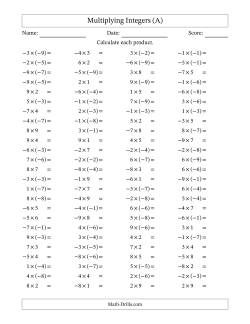
Multiplying integers is very similar to multiplication facts except students need to learn the rules for the negative and positive signs. In short, they are:
In words, multiplying two positives or two negatives together results in a positive product, and multiplying a negative and a positive in either order results in a negative product. So, -8 × 8, 8 × (-8), -8 × (-8) and 8 × 8 all result in an absolute value of 64, but in two cases, the answer is positive (64) and in two cases the answer is negative (-64).
Should you wish to develop some "real-world" examples of integer multiplication, it might be a stretch due to the abstract nature of negative numbers. Sure, you could come up with some scenario about owing a debt and removing the debt in previous months, but this may only result in confusion. For now students can learn the rules of multiplying integers and worry about the analogies later!
- Multiplying Integers with 100 Questions Per Page Multiplying Mixed Integers from -9 to 9 (100 Questions) ✎ Multiplying Positive by Negative Integers from -9 to 9 (100 Questions) ✎ Multiplying Negative by Positive Integers from -9 to 9 (100 Questions) ✎ Multiplying Negative by Negative Integers from -9 to 9 (100 Questions) ✎ Multiplying Mixed Integers from -12 to 12 (100 Questions) ✎ Multiplying Positive by Negative Integers from -12 to 12 (100 Questions) ✎ Multiplying Negative by Positive Integers from -12 to 12 (100 Questions) ✎ Multiplying Negative by Negative Integers from -12 to 12 (100 Questions) ✎ Multiplying Mixed Integers from -20 to 20 (100 Questions) ✎ Multiplying Mixed Integers from -50 to 50 (100 Questions) ✎
- Multiplying Integers with 50 Questions Per Page Multiplying Mixed Integers from -9 to 9 (50 Questions) ✎ Multiplying Positive by Negative Integers from -9 to 9 (50 Questions) ✎ Multiplying Negative by Positive Integers from -9 to 9 (50 Questions) ✎ Multiplying Negative by Negative Integers from -9 to 9 (50 Questions) ✎ Multiplying Mixed Integers from -12 to 12 (50 Questions) ✎ Multiplying Positive by Negative Integers from -12 to 12 (50 Questions) ✎ Multiplying Negative by Positive Integers from -12 to 12 (50 Questions) ✎ Multiplying Negative by Negative Integers from -12 to 12 (50 Questions) ✎
- Multiplying Integers with 25 Large Print Questions Per Page Multiplying Mixed Integers from -9 to 9 (25 Questions; Large Print) ✎ Multiplying Positive by Negative Integers from -9 to 9 (25 Questions; Large Print) ✎ Multiplying Negative by Positive Integers from -9 to 9 (25 Questions; Large Print) ✎ Multiplying Negative by Negative Integers from -9 to 9 (25 Questions; Large Print) ✎ Multiplying Mixed Integers from -12 to 12 (25 Questions; Large Print) ✎ Multiplying Positive by Negative Integers from -12 to 12 (25 Questions; Large Print) ✎ Multiplying Negative by Positive Integers from -12 to 12 (25 Questions; Large Print) ✎ Multiplying Negative by Negative Integers from -12 to 12 (25 Questions; Large Print) ✎
Luckily (for your students), the rules of dividing integers are the same as the rules for multiplying:
Dividing a positive by a positive integer or a negative by a negative integer will result in a positive integer. Dividing a negative by a positive integer or a positive by a negative integer will result in a negative integer. A good grasp of division facts and a knowledge of the rules for multiplying and dividing integers will go a long way in helping your students master integer division. Use the worksheets in this section to guide students along.
- Dividing Integers with 100 Questions Per Page Dividing Mixed Integers from -9 to 9 (100 Questions) ✎ Dividing Positive by Negative Integers from -9 to 9 (100 Questions) ✎ Dividing Negative by Positive Integers from -9 to 9 (100 Questions) ✎ Dividing Negative by Negative Integers from -9 to 9 (100 Questions) ✎ Dividing Mixed Integers from -12 to 12 (100 Questions) ✎ Dividing Positive by Negative Integers from -12 to 12 (100 Questions) ✎ Dividing Negative by Positive Integers from -12 to 12 (100 Questions) ✎ Dividing Negative by Negative Integers from -12 to 12 (100 Questions) ✎
- Dividing Integers with 50 Questions Per Page Dividing Mixed Integers from -9 to 9 (50 Questions) ✎ Dividing Positive by Negative Integers from -9 to 9 (50 Questions) ✎ Dividing Negative by Positive Integers from -9 to 9 (50 Questions) ✎ Dividing Negative by Negative Integers from -9 to 9 (50 Questions) ✎ Dividing Mixed Integers from -12 to 12 (50 Questions) ✎ Dividing Positive by Negative Integers from -12 to 12 (50 Questions) ✎ Dividing Negative by Positive Integers from -12 to 12 (50 Questions) ✎ Dividing Negative by Negative Integers from -12 to 12 (50 Questions) ✎
- Dividing Integers with 25 Large Print Questions Per Page Dividing Mixed Integers from -9 to 9 (25 Questions; Large Print) ✎ Dividing Positive by Negative Integers from -9 to 9 (25 Questions; Large Print) ✎ Dividing Negative by Positive Integers from -9 to 9 (25 Questions; Large Print) ✎ Dividing Negative by Negative Integers from -9 to 9 (25 Questions; Large Print) ✎ Dividing Mixed Integers from -12 to 12 (25 Questions; Large Print) ✎ Dividing Positive by Negative Integers from -12 to 12 (25 Questions; Large Print) ✎ Dividing Negative by Positive Integers from -12 to 12 (25 Questions; Large Print) ✎ Dividing Negative by Negative Integers from -12 to 12 (25 Questions; Large Print) ✎
This section includes worksheets with both multiplying and dividing integers on the same page. As long as students know their facts and the integer rules for multiplying and dividing, their sole worry will be to pay attention to the operation signs.
- Multiplying and Dividing Integers with 100 Questions Per Page Multiplying and Dividing Mixed Integers from -9 to 9 (100 Questions) ✎ Multiplying and Dividing Positive and Negative Integers from -9 to 9 (100 Questions) ✎ Multiplying and Dividing Negative and Positive Integers from -9 to 9 (100 Questions) ✎ Multiplying and Dividing Negative and Negative Integers from -9 to 9 (100 Questions) ✎ Multiplying and Dividing Mixed Integers from -12 to 12 (100 Questions) ✎ Multiplying and Dividing Positive and Negative Integers from -12 to 12 (100 Questions) ✎ Multiplying and Dividing Negative and Positive Integers from -12 to 12 (100 Questions) ✎ Multiplying and Dividing Negative and Negative Integers from -12 to 12 (100 Questions) ✎
- Multiplying and Dividing Integers with 75 Questions Per Page Multiplying and Dividing Mixed Integers from -9 to 9 (75 Questions) ✎ Multiplying and Dividing Positive and Negative Integers from -9 to 9 (75 Questions) ✎ Multiplying and Dividing Negative and Positive Integers from -9 to 9 (75 Questions) ✎ Multiplying and Dividing Negative and Negative Integers from -9 to 9 (75 Questions) ✎ Multiplying and Dividing Mixed Integers from -12 to 12 (75 Questions) ✎ Multiplying and Dividing Positive and Negative Integers from -12 to 12 (75 Questions) ✎ Multiplying and Dividing Negative and Positive Integers from -12 to 12 (75 Questions) ✎ Multiplying and Dividing Negative and Negative Integers from -12 to 12 (75 Questions) ✎
- Multiplying and Dividing Integers with 50 Questions Per Page Multiplying and Dividing Mixed Integers from -9 to 9 (50 Questions) ✎ Multiplying and Dividing Positive and Negative Integers from -9 to 9 (50 Questions) ✎ Multiplying and Dividing Negative and Positive Integers from -9 to 9 (50 Questions) ✎ Multiplying and Dividing Negative and Negative Integers from -9 to 9 (50 Questions) ✎ Multiplying and Dividing Mixed Integers from -12 to 12 (50 Questions) ✎ Multiplying and Dividing Positive and Negative Integers from -12 to 12 (50 Questions) ✎ Multiplying and Dividing Negative and Positive Integers from -12 to 12 (50 Questions) ✎ Multiplying and Dividing Negative and Negative Integers from -12 to 12 (50 Questions) ✎
- Multiplying and Dividing Integers with 25 Large Print Questions Per Page Multiplying and Dividing Mixed Integers from -9 to 9 (25 Questions; Large Print) ✎ Multiplying and Dividing Positive and Negative Integers from -9 to 9 (25 Questions; Large Print) ✎ Multiplying and Dividing Negative and Positive Integers from -9 to 9 (25 Questions; Large Print) ✎ Multiplying and Dividing Negative and Negative Integers from -9 to 9 (25 Questions; Large Print) ✎ Multiplying and Dividing Mixed Integers from -12 to 12 (25 Questions; Large Print) ✎ Multiplying and Dividing Positive and Negative Integers from -12 to 12 (25 Questions; Large Print) ✎ Multiplying and Dividing Negative and Positive Integers from -12 to 12 (25 Questions; Large Print) ✎ Multiplying and Dividing Negative and Negative Integers from -12 to 12 (25 Questions; Large Print) ✎
All Operations with Integers
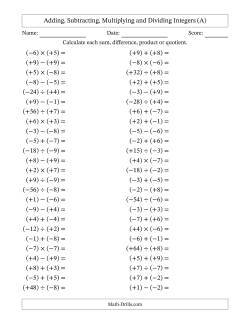
In this section, the integers math worksheets include all of the operations. Students will need to pay attention to the operations and the signs and use mental math or another strategy to arrive at the correct answers. It should go without saying that students need to know their basic addition, subtraction, multiplication and division facts and rules regarding operations with integers before they should complete any of these worksheets independently. Of course, the worksheets can be used as a source of questions for lessons, tests or other learning activities.
- All Operations with Integers with 50 Questions Per Page (Some Parentheses) All operations with integers from -9 to 9 (50 Questions) ✎ All operations with integers from -12 to 12 (50 Questions) ✎ All operations with integers from -15 to 15 (50 Questions) ✎ All operations with integers from -20 to 20 (50 Questions) ✎ All operations with integers from -25 to 25 (50 Questions) ✎ All operations with integers from -50 to 50 (50 Questions) ✎ All operations with integers from -99 to 99 (50 Questions) ✎
- All Operations with Integers with 50 Questions Per Page (All Parentheses) All operations with integers from (-9) to (+9) All Parentheses (50 Questions) ✎ All operations with integers from (-12) to (+12) All Parentheses (50 Questions) ✎ All operations with integers from (-15) to (+15) All Parentheses (50 Questions) ✎ All operations with integers from (-20) to (+20) All Parentheses (50 Questions) ✎ All operations with integers from (-25) to (+25) All Parentheses (50 Questions) ✎ All operations with integers from (-50) to (+50) All Parentheses (50 Questions) ✎ All operations with integers from (-99) to (+99) All Parentheses (50 Questions) ✎
- All Operations with Integers with 50 Questions Per Page (No Parentheses) All operations with integers from -9 to 9 No Parentheses (50 Questions) ✎ All operations with integers from -12 to 12 No Parentheses (50 Questions) ✎ All operations with integers from -15 to 15 No Parentheses (50 Questions) ✎ All operations with integers from -20 to 20 No Parentheses (50 Questions) ✎ All operations with integers from -25 to 25 No Parentheses (50 Questions) ✎ All operations with integers from -50 to 50 No Parentheses (50 Questions) ✎ All operations with integers from -99 to 99 No Parentheses (50 Questions) ✎
Order of operations with integers can be found on the Order of Operations page:
Order of Operations with Integers
Copyright © 2005-2024 Math-Drills.com You may use the math worksheets on this website according to our Terms of Use to help students learn math.

IMAGES
COMMENTS
These grade 5 word problems involve the multiplication of common fractions by other fractions or whole numbers. Some problems ask students between what numbers does the answer lie? Answers are simplified where possible. Worksheet #1 Worksheet #2 Worksheet #3 Worksheet #4. Worksheet #5 Worksheet #6.
Fraction Multiplication Word Problems Worksheets. Our printable worksheets on multiplying fractions word problems task grade 4 through grade 7 students with reading and solving realistic scenarios by performing fraction multiplication. The problems feature both common and uncommon denominators, so the budding problem-solving stars must follow ...
Next, we will need to find equivalent fractions for both of our fractions. 1/4 x 3/3 = 3/12 and 1/3 x 4/4 = 4/12. 4. Now all that is left is to subtract 3 part and then 4 parts. 5. Finally, we can see that there 5/12 of the cake left. Word Problems are an important part of math instruction, and how we do math in everyday life.
Learn for free about math, art, computer programming, economics, physics, chemistry, biology, medicine, finance, history, and more. Khan Academy is a nonprofit with the mission of providing a free, world-class education for anyone, anywhere. ... Multiplying fractions word problem: laundry .
Multiplying fractions word problems: How to do this without a figure or an illustration. Example #3: A recipe needs 1/4 tablespoon salt. How much salt does 8 such recipe need? Solution. This word problem requires multiplication of fractions. Instead of adding 1/4 eight times, we can just do the following: 1/4 × 8 = 1/4 × 8/1 = (1 × 8)/ (4 × ...
♫ "Multiplying fractions: no big problem, Top times top over bottom times bottom. "And don't forget to simplify, Before it's time to say goodbye" ♫ Fractions and Whole Numbers. What about multiplying fractions and whole numbers? Make the whole number a fraction, by putting it over 1. Example: 5 is also 5 1. Then continue as before. Example:
Learn for free about math, art, computer programming, economics, physics, chemistry, biology, medicine, finance, history, and more. ... Represent fraction multiplication with visuals. Multiplying fractions with visuals. Multiplying 2 fractions: 5/6 x 2/3. ... Report a problem
The second section contains sheets multiplying fractions by other fractions. Before your child tackles multiplying fractions, they should be confident with converting improper fractions to mixed numbers, and also using simplest form. Using these sheets will help your child to: multiply a fraction by a whole number; multiply 2 fractions together;
Yes you can! Dividing by a number is the same as multiplying by its reciprocal. To find the reciprocal of a number we swap the numerator and denominator. Just be careful not to get confused when saying you divide a fraction by something. For example, you might accidentally do this: 3/4 ÷ 2. 3/(4÷2) 3/2.
Now, we can solve 3/5 x 9/2 to find the answer to this problem as follows: Step One: Multiply the numerators together. Start off multiplying the numerators of both fractions: 3 x 9 = 27. Step Two: Multiply the denominators together. Continue by multiplying the denominators of both fractions: 5 x 2 = 10.
To do this, multiply the numerator and the denominator of each fraction by the same number so that it results in a denominator of 24. 24. This will give you an equivalent fraction for each fraction in the problem. [Math Processing Error]8 × 37 × 3 = 2421 3 × 81 × 8 = 248. Now you can subtract the fractions.
Multiplying fractions is the multiplication of one fraction by the other fraction. Visit BYJU'S to learn the multiplying fractions by whole numbers, fractions, variables with examples. ... If required, we can convert the improper fraction into a mixed fraction. Example 1: Solve ... Problems and Solutions. Q.1: Multiply ⅖ and 6/7. Solution ...
Multiplying fractions questions are given here with solutions for practice. Visit BYJU'S to learn multiplying fractions by solving questions with video lessons and many more study resources. ... Now let us solve questions on the multiplication of fractions. Question 1: Solve the following: (i) ⅔ × ⅗ (ii) 9/7 × ⅜ (iii) ⅘ × ⅚ ...
Click here for Answers. . multiplication. Practice Questions. Previous: Increasing/Decreasing by a Fraction Practice Questions. Next: Conversion Graphs Practice Questions. The Corbettmaths Practice Questions on Multiplying Fractions.
Word Problems on Multiplication of Fractions: 1. 47 4 7 of a number is 84. Find the number. Solution: According to the problem, 47 4 7 of a number = 84. Number = 84 × 74 7 4. [Here we need to multiply 84 by the reciprocal of 47 4 7] = 21 × 7.
This exercise sheet on multiply fractions has different types of questions that can be practiced by the seventh grade math students to get more ideas to solve all types of questions in worksheet on multiplication of fractions. 1. Multiply the fractions: (i) 7/11 by 3/5. (ii) 3/5 by 25. (iii) 3⁴/₁₅ by 24. (iv) 3¹/₈ by 410 11 10 11.
Maths | Year 6 | Fractions | Multiplying Fractions | Lesson 2 of 3: Word Problems Multiplying Fractions Word Problems Answers For each word problem, multiply the fractions together to find the answer. Show your working out. 1. A group of children play in an orchestra. of the children play a brass instrument. Of these children, play a trumpet.
Learn for free about math, art, computer programming, economics, physics, chemistry, biology, medicine, finance, history, and more. Khan Academy is a nonprofit with the mission of providing a free, world-class education for anyone, anywhere. ... Multiplying fractions word problem: movies . Video 2 minutes 21 seconds 2:21. Multiplying fractions ...
Fraction multiplication word problems Grade 5 Word Problems Worksheet 1. There was 5 8 of a pie left in the fridge. Daniel ate 1 4 of the leftover pie. How much of a pie did he have? 2. Olivia took out 8 glasses and poured juice from the pitcher. ... fraction, multiplication, math, word problems, grade 5, worksheet Created Date:
Step 1: Read the given word problem. Look for the two fractions that are in the problem. Identify any keywords that suggest that the two fractions will be multiplied. The most common keywords are ...
Worksheets for practicing fraction multiplication, including multiplication of fractions and mixed numbers. Worksheet #1 Worksheet #2 Worksheet #3 Worksheet #4 Worksheet #5 Worksheet #6. 5 More. Similar: Multiply mixed numbers Multiply improper fractions.
Math explained in easy language, plus puzzles, games, quizzes, videos and worksheets. For K-12 kids, teachers and parents. Fraction Worksheets ... Fractions - Multiplication. Worksheet. Example. Fractions (Same Denominator) 15 × 25. Unit Fractions. 13 × 19. Easy Proper Fractions. 38 × 27. Harder Proper Fractions. 712 × 1525.
Word problem worksheets: Multiply fractions by whole numbers. Below are three versions of our grade 4 math worksheet with word problems involving the multiplication of fractions by whole numbers. students are asked to answer and interpret word problems where fractional amounts are multiplied by whole numbers.
The NRICH Project aims to enrich the mathematical experiences of all learners. To support this aim, members of the NRICH team work in a wide range of capacities, including providing professional development for teachers wishing to embed rich mathematical tasks into everyday classroom practice.
Multiplying integers is very similar to multiplication facts except students need to learn the rules for the negative and positive signs. In short, they are: In words, multiplying two positives or two negatives together results in a positive product, and multiplying a negative and a positive in either order results in a negative product.
Keywords: math problems, homework help, multiplication, addition, learning math, easy math, math for kids, math tutorial, solving math equations. This information is AI generated and may return results that are not relevant. It does not represent TikTok's views or advice.